FAQ’s on travel in Tibet, UPDATED JULY 2024
I get emails everyday from across the globe asking for travel advice on Tibet. I do my best to answer as many of those questions as I can. On my website, I have tried to make it as clear as possible how to arrange travel to Tibet. If you have never been to Tibet before, it can be quite confusing trying to understand travel permits, group visa’s and determining if the area you are going to requires a guide or not. In this post, I will answer some of the most frequently ask questions I receive regarding travel in Tibet.
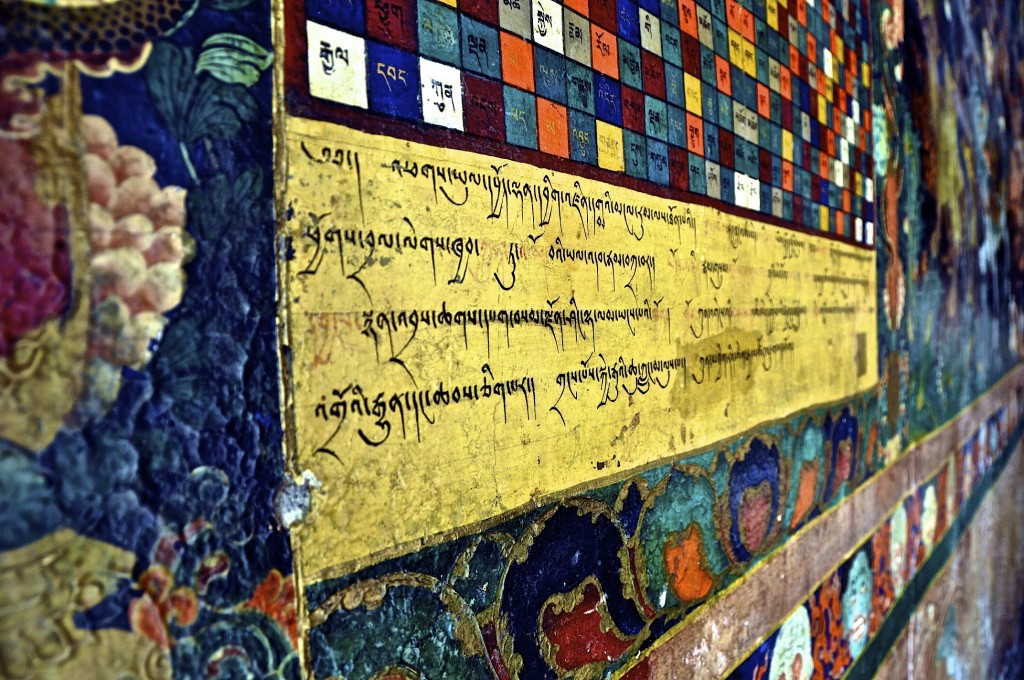
Mural on an outside wall of a monastery in Lhasa
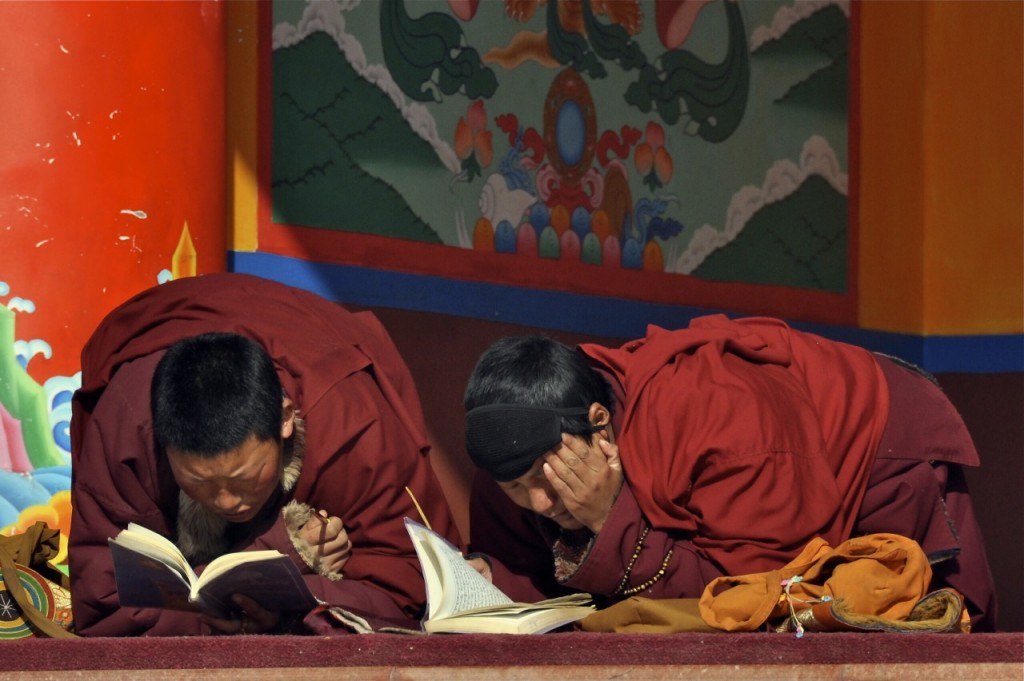
Nuns from Larung Gar in Serthar གསེར་ཐར་ (Seda in western Sichuan)
1. Where is Tibet?
To the Tibetan people and to foreigners familiar with Tibet and Tibetan Buddhism, Tibet encompasses the entire Tibetan Plateau where the Tibetan people are native to. This includes all counties of the Tibet Autonomous Region (TAR), 95% of the land area of Qinghai province, southwest Gansu, northern Sichuan, western Sichuan and far northwest Yunnan. Traditionally Tibet was divided into specific regions such as U, Tsang, Kham, Amdo, Ngari, Kongpo and Gyarong. In all of my writings, I refer to all of the Tibetan Plateau as being “Tibet” as that is what the majority of Tibetan people do as well.
2. Is there a difference between Tibet and the Tibet Autonomous Region?
Yes, there is a major difference in these two terms. The term “Tibet” refers to the entire Tibetan Plateau where the Tibetan people are native to. This includes all of the different regions listed above in #1. The Tibet Autonomous Region (TAR) refers to only 50% of the land mass of the Tibetan Plateau. Parts of Tibet are spread across 5 provinces and regions of southwestern China. Don’t let the lines of a Chinese map confuse you. Tibet is a much, much larger area than just the TAR. Roughly 60% of the Tibetan people live outside of the TAR in other regions of Tibet. The terms “Tibet” and “Tibet Autonomous Region” mean two very different things.
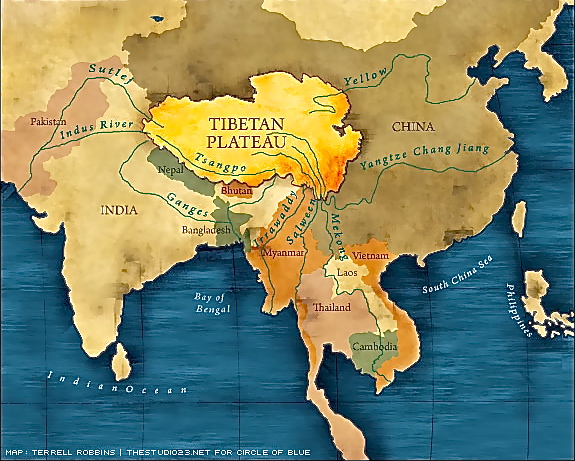
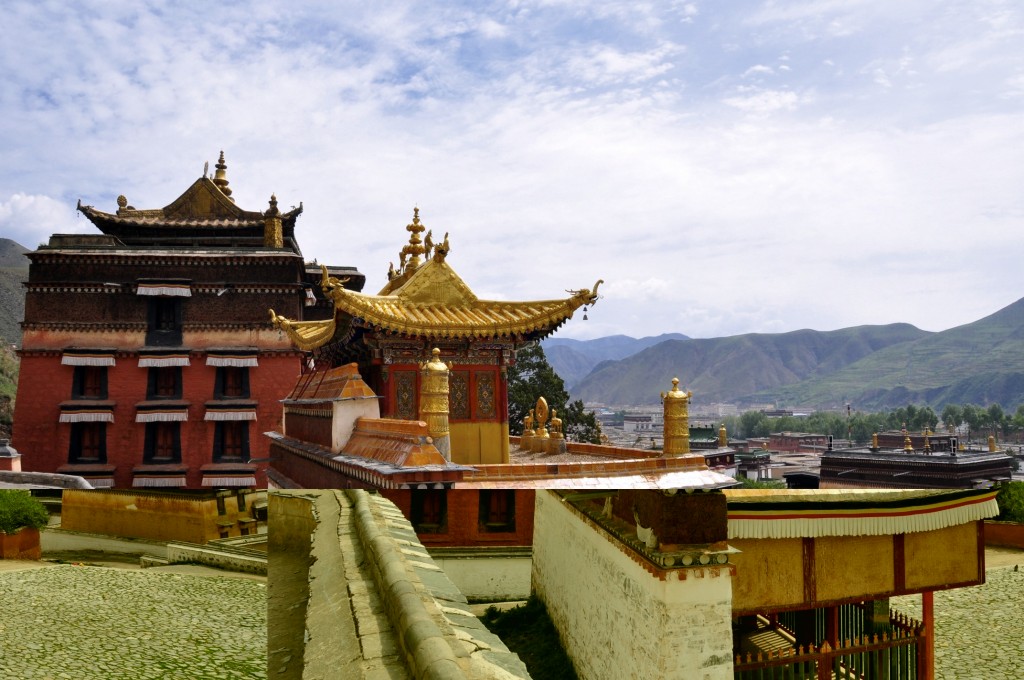
Labrang Monastery བླ་བྲང་དགོན་པ in Sangchu county བསང་ཆུ་རྫོང་ (Xiahe in southwest Gansu)
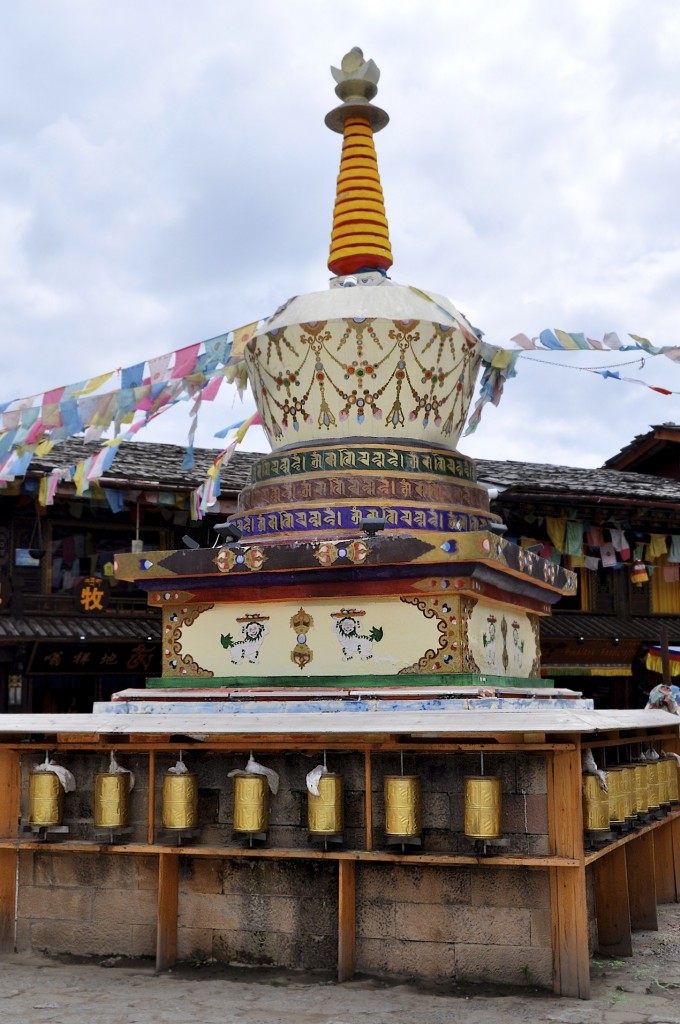
Stupa in Gyelthang རྒྱལ་ཐང་ (northwest Yunnan)
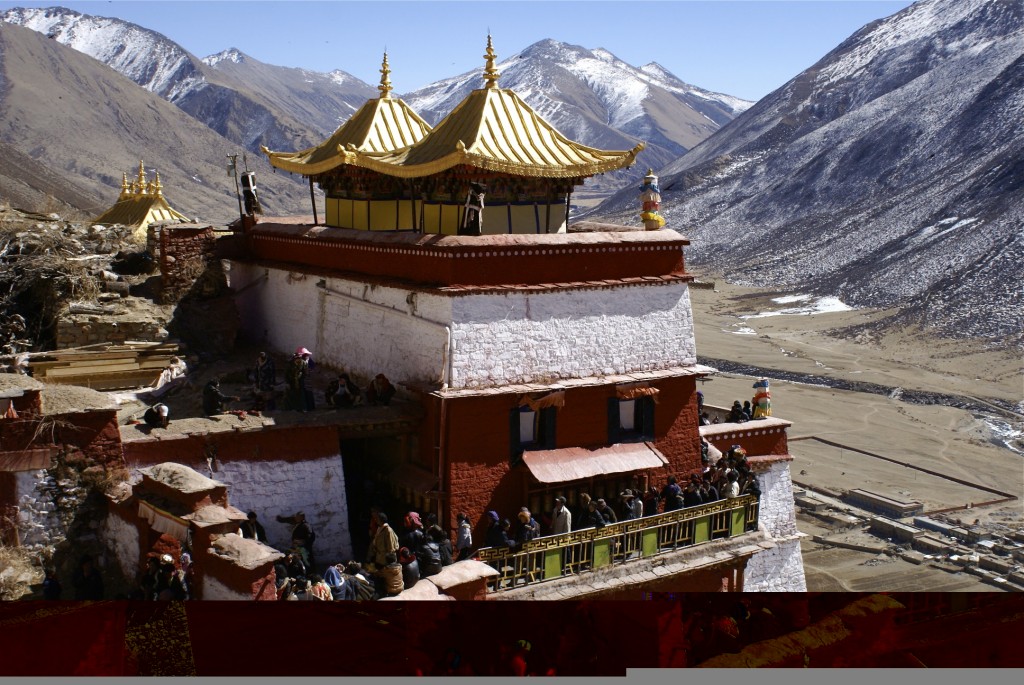
Drigung Monastery འབྲི་གུང་དགོན་ in Meldro Gungkar county མལ་གྲོ་གུང་དཀར་རྫོང་ (central TAR)
3. Which areas of Tibet require an organized tour?
All areas of the Tibet Autonomous Region require all foreign travelers to be part of an organized tour with a Tibet travel agency, that includes travel permits, a tour guide and a private vehicle with a driver (no private vehicle needed if you are just staying in Lhasa). The Tibetan prefectures found in Qinghai, northern Sichuan, western Sichuan, southwest Gansu and northwest Yunnan are (usually) open and do not require travel permits or a tour guide.
4. How can foreigners go to the TAR without an organized tour and tour guide?
You can’t. Unless you are a student at the Tibet University or have a work permit and resident visa for the TAR, you cannot go to the TAR without being on an organized tour. There are NO exceptions! Foreign travelers MUST be part of an organized tour that includes permits, a tour guide and a private vehicle with a driver.
5. Do I really need to have a tour guide if I am only going to Lhasa?
Yes, absolutely. Before the events of March 2008, foreigners did not need a tour guide if they were in Lhasa or traveled along the route connecting Lhasa to Mt. Everest Base Camp and the Nepal border. Since March 2008, major changes have happened regarding travel regulations for foreigners in the TAR. Now, everyone MUST have a tour guide each day, even when in Lhasa.
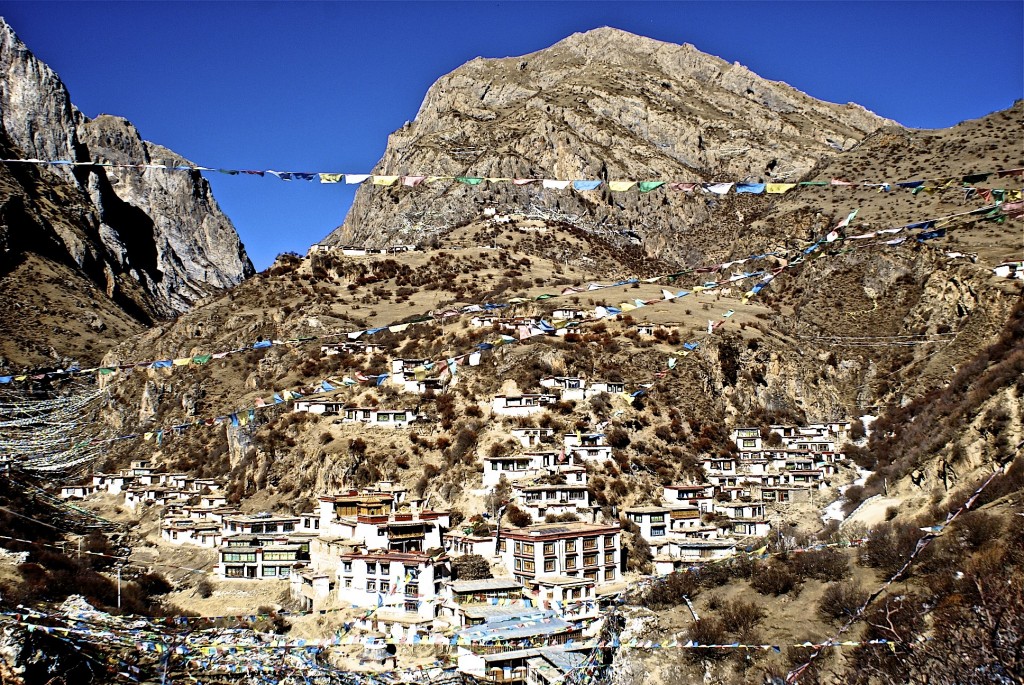
Tidrum Nunnery outside of Lhasa
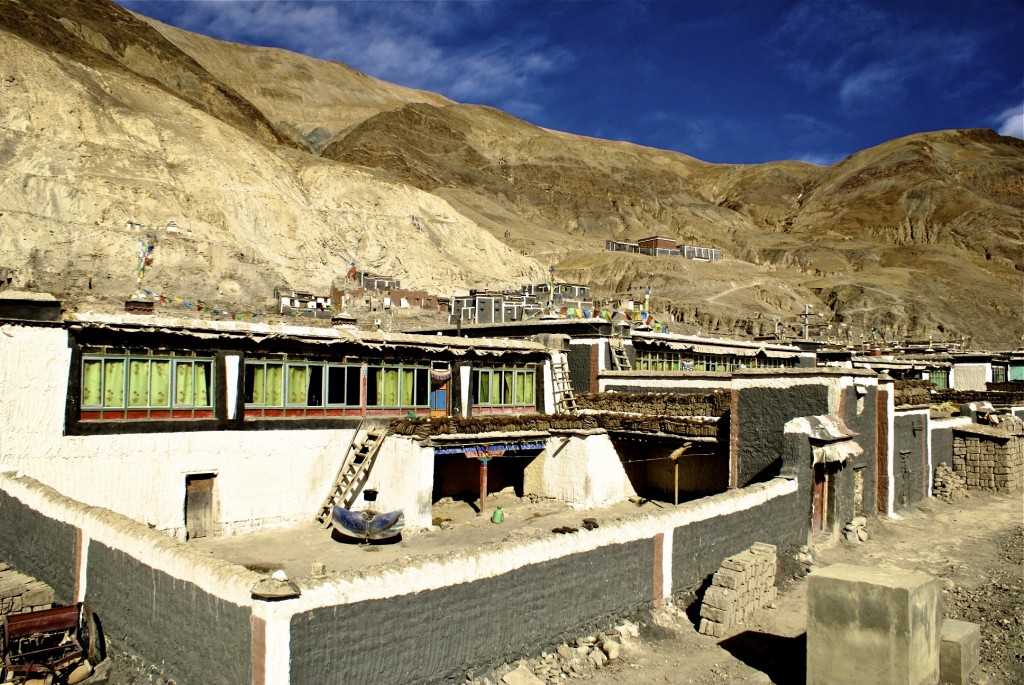
Homes in the small town of Sakya ས་སྐྱ་ in the southwest portion of the TAR
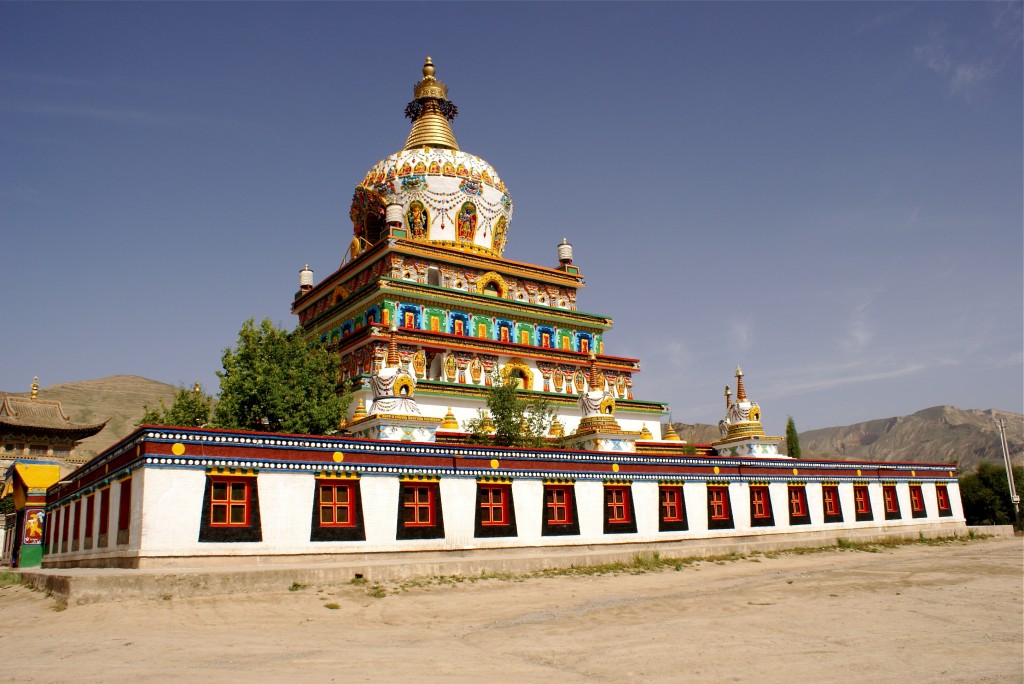
A huge stupa in Rebkong རེབ་གོང (Tongren in southeast Qinghai)
6. Is arranging travel to the TAR difficult?
No, once you separate the facts from the fiction regarding travel to the TAR, arranging travel is actually very easy. The travel agency that you choose actually does almost all of the work arranging your tour. All you do is decide the route you want to take and exchange some emails with the travel agency you use. Read through the following link for detailed information on how to arrange travel to the TAR:
How to arrange travel to the TAR
7. I have heard of people taking public buses within the TAR recently. How can I do that also in order to keep the cost of travel low?
This is simply not true. Foreigners MUST use a private vehicle with a driver. The only exception is within Lhasa where foreigners can use taxi and city buses. Before March 2008, foreigners used to be able to take public buses to Ganden Monastery, Samye Monastery and to a few other places outside of Lhasa. Now, this is impossible. The bus station in Lhasa will not sell tickets to foreigners and bus drivers will not allow foreigners onto buses that go outside of Lhasa.
8. I don’t like the travel regulations for the TAR and plan to sneak in illegally. Do you think I will be caught?
Your chances of making it to Lhasa illegally without being caught are very, very slim. I have heard only a handful of confirmed reports of foreigners making it to Lhasa without any problems over the past 7 years. Without showing your valid Tibet Travel Permit, you will not be allowed to board a flight or train to Lhasa. Sneaking in overland from places like Dege, Batang, Shangri La or Nangchen will be extremely difficult as well. First, there is normally a lot of police along these towns specifically looking for foreigners trying to enter the TAR illegally. Second, in order to go from the above towns to Lhasa, you will have to pass through Chamdo prefecture in the far eastern region of the TAR. Chamdo prefecture has been completely off-limits to foreign travelers since March 2009. Police will see you, detain you (some people have reported to me being detained for up to 5 days), fined and then sent back to Chengdu.
If you do happen to miraculously make it to Lhasa (which is HIGHLY unlikely), you will have problems finding a hotel that will take you without having a valid travel permit. A lot of passport holders of other East Asian countries think they have an advantage over other travelers because they look Chinese. However, I have seen several Japanese, Korean and Chinese-Americans sitting at the police station in Lhasa in past years because they entered the TAR illegally.
There are numerous checkpoints throughout the TAR. At many of the checkpoints, everyone will have to register, even Chinese travelers. Your chances of succeeding by sneaking into the TAR are so very, very slim. I do not recommend doing it.
9. Can I stay in the TAR after my tour is finished?
No, your travel permit is only valid for the duration of your tour. Once your tour is completed, you have to leave. Normally, the travel agency that you use will either book your flight/train ticket departing Lhasa or will ask for you to show your outgoing ticket. If you decide to lie and stay in the TAR after your tour is over, you could cause the agency you used to get in huge trouble. They could even lose their business license forcing everyone out of work. Read the following link for more details:
Traveling Illegally in Tibet
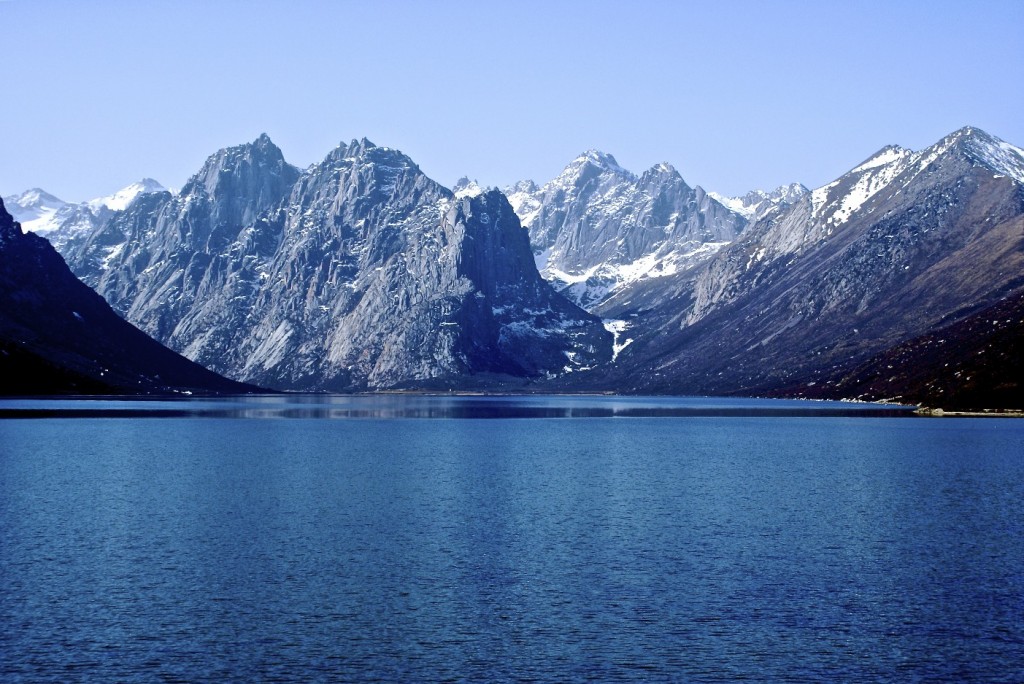
Mt. Nyenbo Yurtse in Jigdril county, Golok prefecture མགོ་ལོག་ཁུལ་གཅིག་སྒྲིལ་རྫོང་ (southeast Qinghai)
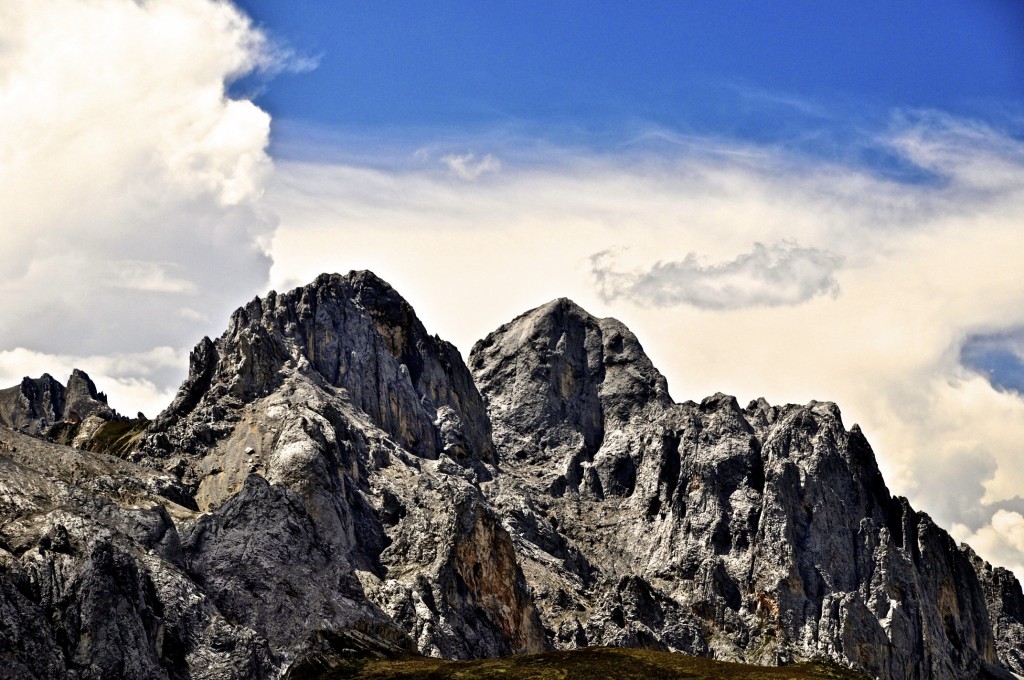
Mountains of Dechen prefecture བདེ་ཆེན་ཁུལ་ (Diqing in northwest Yunnan)
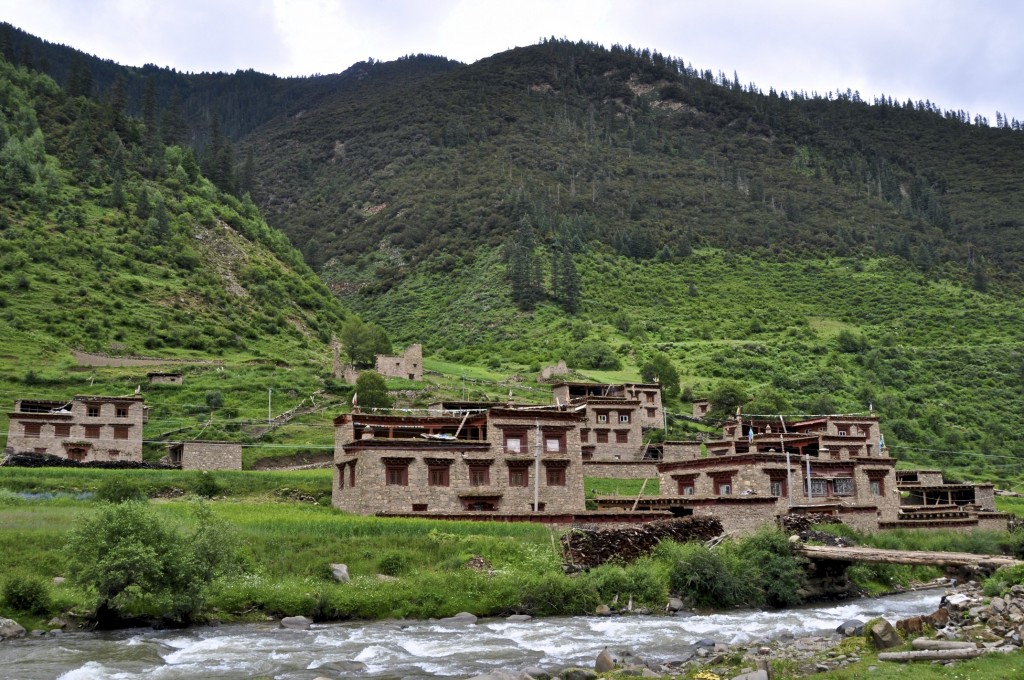
Small village in Nyachu county ཉག་ཆུ་རྫོང་ (Yajiang in western Sichuan)
10. The last few years the TAR as well as Tibetan prefectures in Qinghai, Gansu and Sichuan have been closed during the month of March. Will these regions always be closed in March?
March has several sensitive anniversaries so the government closes most of the Tibetan Plateau from late February until very early April. During that time, it is impossible to get travel permits for the TAR. If everything remains stable, travel permits the past few years begin being issued again sometime around April 1st.
The Tibetan regions of Amdo and Kham found in Qinghai, Sichuan and Gansu also can close during this time. The bus station in Chengdu usually does not sell tickets to the Tibetan regions found in Sichuan during the month of March. Some years, there are many police checkpoints along the way west to Kangding. Foreigners sometimes are made to get off of the bus and return to Chengdu. The Tibetan regions of Amdo and Kham are often times closed longer than the TAR. In 2011, the TAR reopened in early April, but most of the Tibetan regions of Sichuan didn’t reopen until May 1st. It is hard to predict each year if the Amdo and Kham regions will close in March. The only way to know is to travel there and see what happens.
11. When does the Friendship Highway, which links Lhasa with Kathmandu, close in the winter due to snow?
Though the Friendship Highway goes over several 5000m passes in the Himalaya’s, the road only rarely closes due to snow. Winters are generally dry in this region (though once every 5 or 6 years a big storm does come that will close the road for a short time). Though temperatures are cold, most winters little snowfall accumulates. In the rare event that the road does close, it is usually only for a day or two.
12. Do other roads in Tibet close during the winter time due to snow?
Absolutely…Some roads in the Kham regions of the TAR and western Sichuan can get heavy snow in the winter closing roads for many days at a time. In general, though, most of the areas that foreign travelers go to won’t have any problems with closed roads due to snow. The only real exception is the road up to Nam Tso. This road is often closed for weeks or months at a time during the winter.
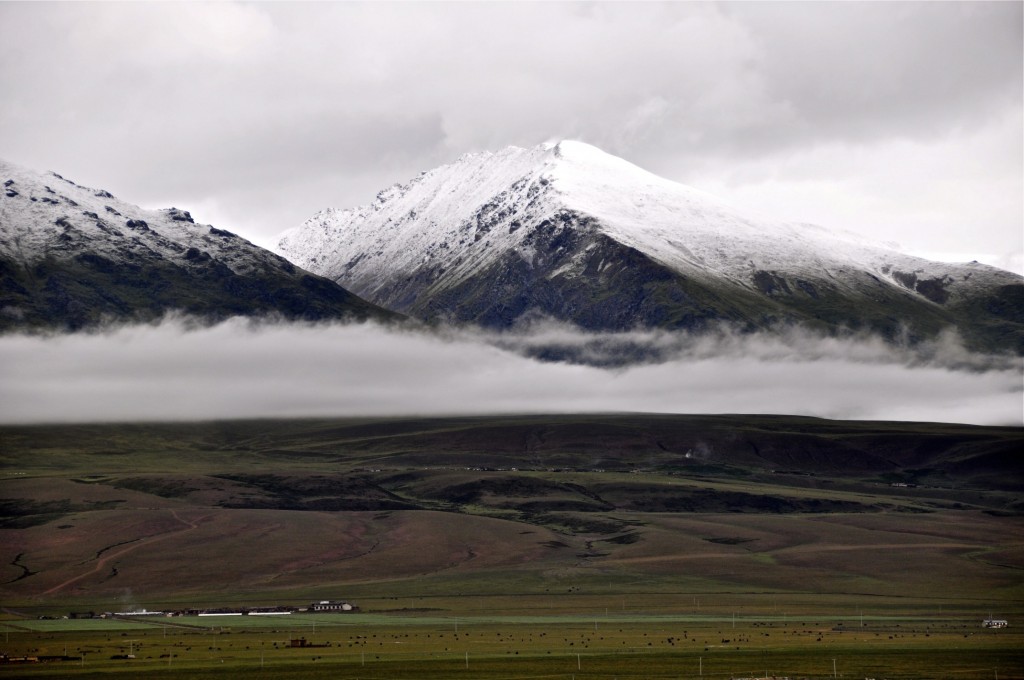
Grasslands of Damshung འདམ་གཞུང་ just north of Lhasa
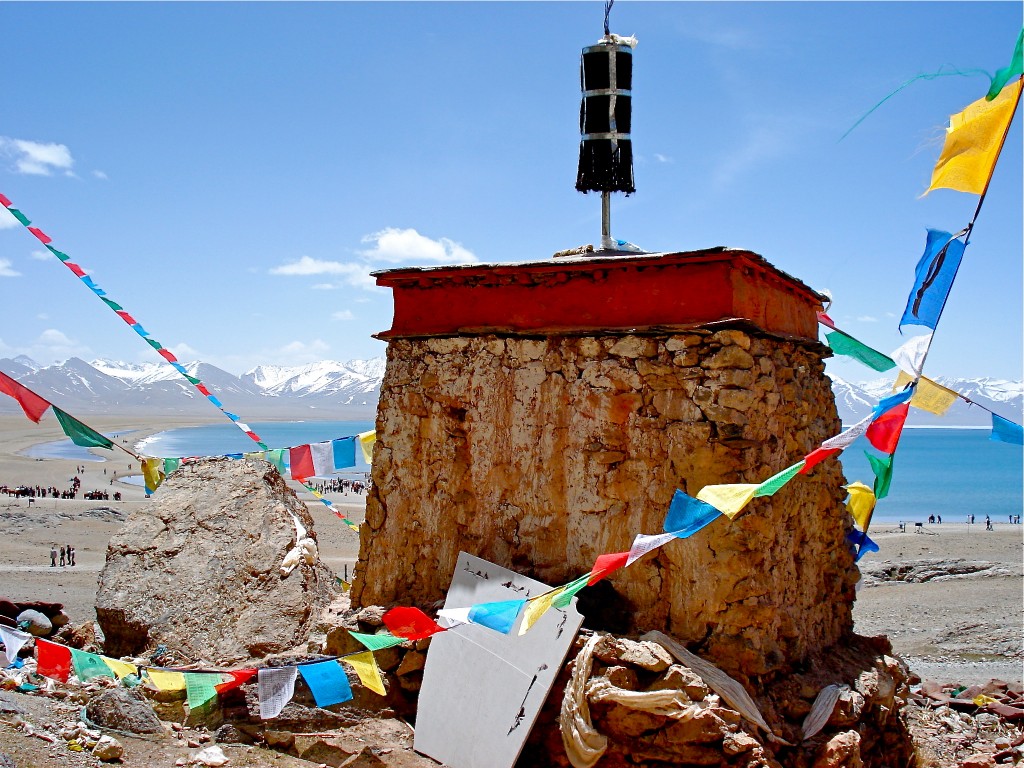
Nam Tso Lake གནམ་མཚོ་
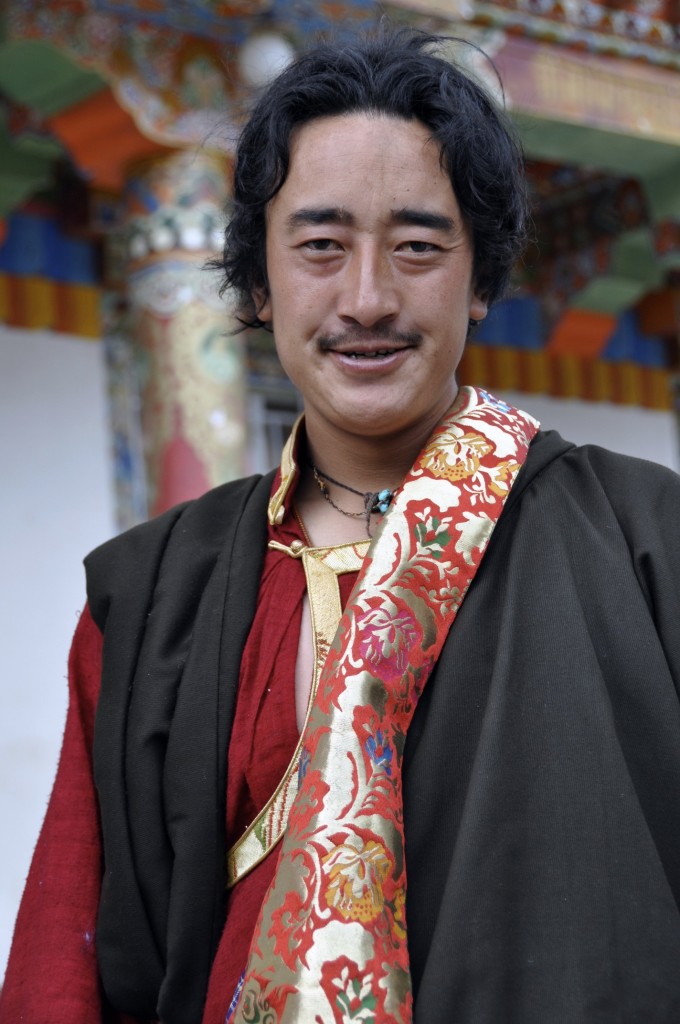
A Kham Tibetan man from Baiyul county དཔལ་ཡུལ་རྫོང་ (Baiyu in western Sichuan)
13. I know that parts of Tibet/Tibetan regions are found in 5 Chinese provinces, but how is Tibet divided up?
The Tibetan people are native to all regions of the Tibetan Plateau and not just the Tibet Autonomous Region (TAR). Tibet is divided into 1 Autonomous Region, 10 Autonomous Prefectures, and 2 Autonomous Counties.
The TAR is divided into 6 prefectures (Ngari/Ali, Nagchu/Naqu, Shigatse/Rikaze, Lhoka/Shannan, Kongpo/Linzhi and Chamdo/Chengdu) and 1 Prefecture-Level City (Lhasa).
Qinghai province is divided into 6 autonomous prefectures (Yulshul/Yushu, Golog/Guoluo, Tsonub/Haixi, Tsolho/Hainan, Tsojang/Haibei and Malho/Huangnan) and one provincial level city (Xining). The prefecture of Tsoshar/Haidong is not Tibetan Autonomous, but does have nearly 150,000 Tibetans living within it. The current 14th Dalai Lama as well as the famous 10th Panchen Lama are from Tsoshar Prefecture. Altogether, 95% of the land mass of Qinghai is designated as “Tibetan Autonomous”.
Sichuan province has 2 autonomous prefectures (Kardze/Ganzi and Ngawa/Aba) and 1 autonomous county (Muli). Nearly half of the land mass of Sichuan is designated as “Tibetan Autonomous”.
Southwest Gansu province has 1 autonomous prefecture (Kanlho/Gannan) and 1 autonomous county (Tianzhu).
Northwest Yunnan has one very small autonomous prefecture (Dechen/Diqing).
Use the map below for a reference to where each specific Tibetan area is:
14. Where exactly are the Kham and Amdo regions of Tibet?
Kham and Amdo cover 50% of the landmass of the Tibetan Plateau and have nearly 60% of the total Tibetan population. The Kham Tibetans live in a large region of the Tibetan Plateau. Kham speaking Tibetans are found in Chamdo, Nagchu and parts of Kongpo* prefectures in the TAR (*Kongpo is not all Kham speaking, but about 1/3 are), Yushu prefecture in Qinghai, Kardze** prefecture in western Sichaun and in Dechen prefecture in NW Yunnan (**not all Tibetans in Kardze prefecture are Kham speaking, though the majority are). There are around 2.1 million Kham speaking Tibetans out a total Tibetan population within China of around 5.8 million.
Amdo speaking Tibetans are found in in Tsonub, Tsoshar, Tsojang, Tsolho, Golog and Malho prefectures in Qinghai, Kanlho prefecture in Gansu and Ngawa prefecture in Sichuan. Altogether, there are around 1.9 million Amdo speaking Tibetans.
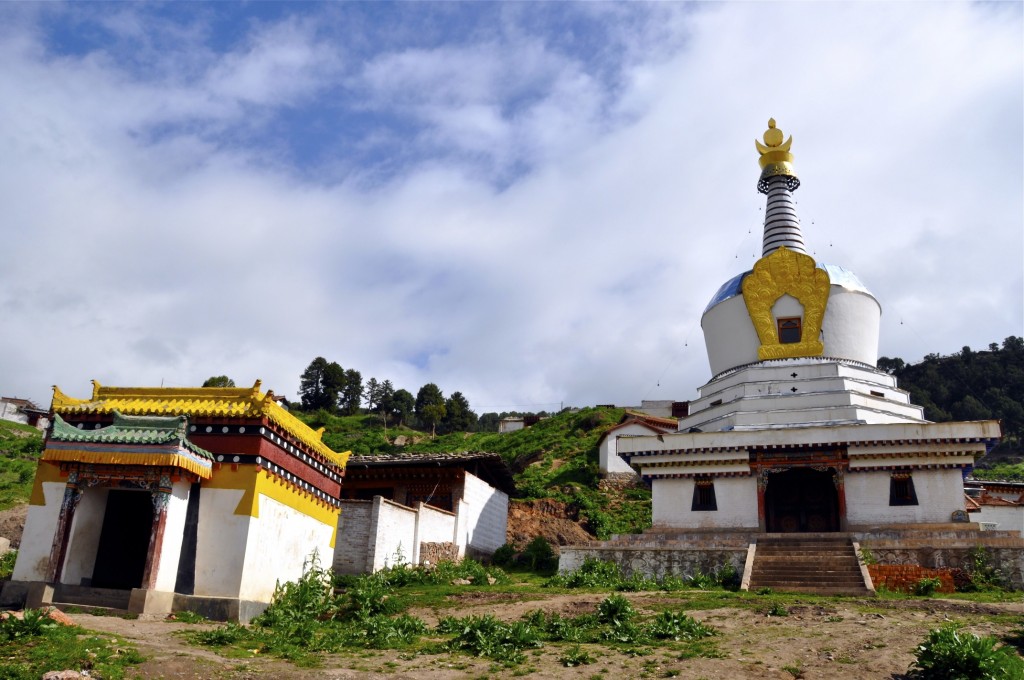
A monastery near Taktsang Lhamo སྟག་ཚང་ལྷ་མོ་ (Langmusi in southwest Gansu)
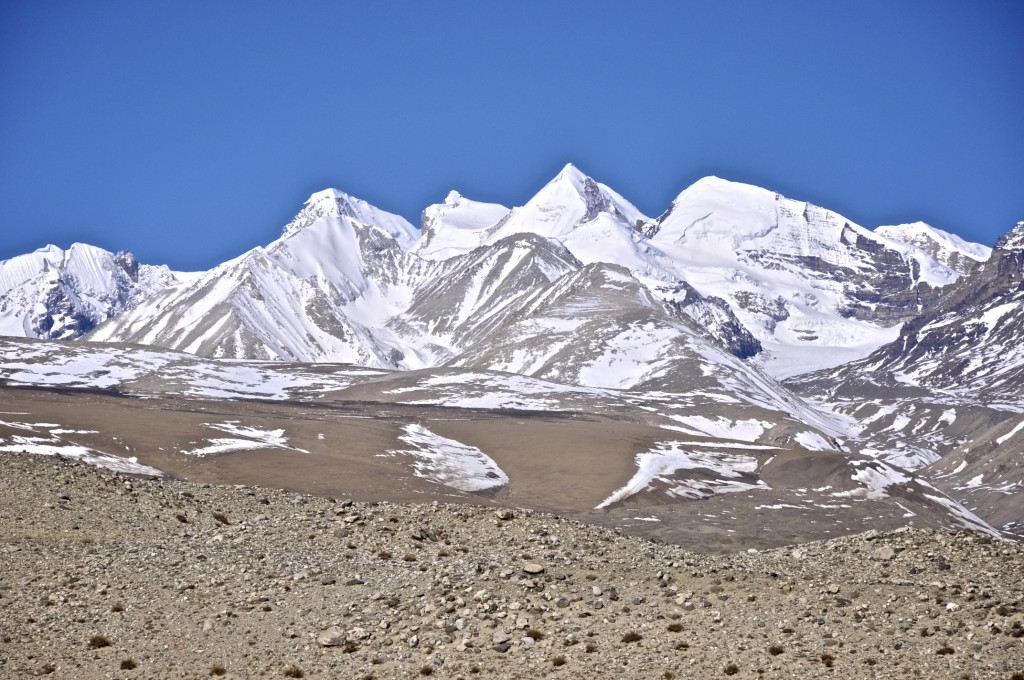
Section of the Himalaya’s in Tingri county དིང་རི་རྫོང་ (southwest TAR)
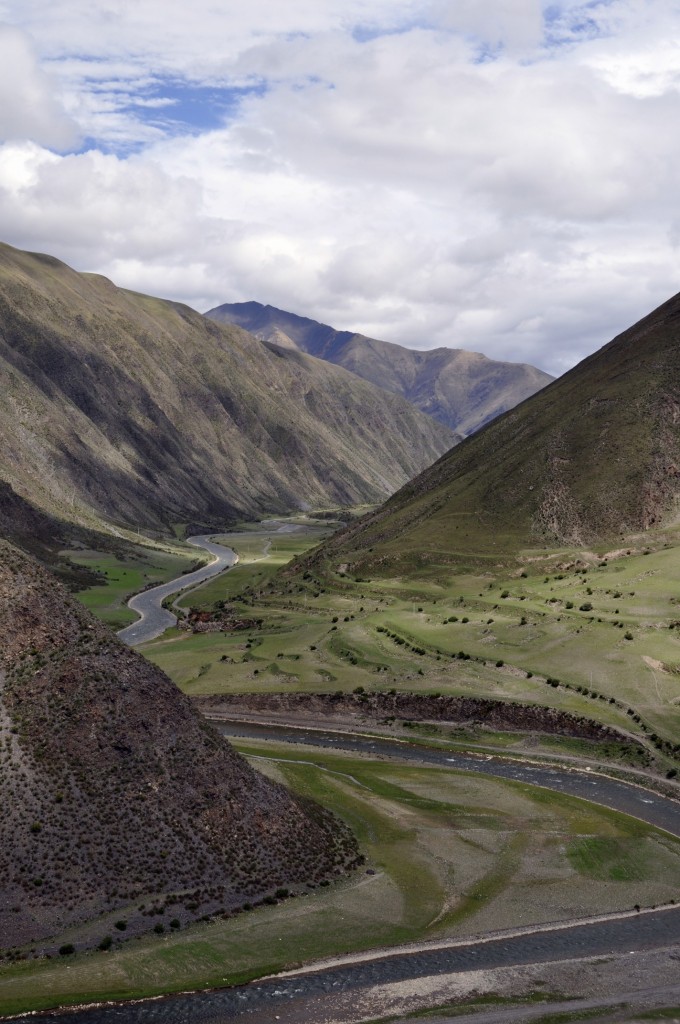
A valley in Yushu county ཡུལ་ཤུལ་རྫོང་ (southern Qinghai province)
15. Where is the best place to start for exploring the Kham and Amdo regions?
For the open parts of the Kham region (the TAR regions of Kham require foreigners to have a complete organized tour that includes travel permits, a tour guide and a private vehicle with a driver), the best place to start is Chengdu or Kangding. Kangding is located in Kham and is the gateway to the Kham Tibetan world. From both Chengdu and Kangding, buses can be taken to nearly every open Kham Tibetan county.
For the Amdo regions, Xining and Chengdu are the best places to start. From Xining, there are daily buses to every Amdo county in Qinghai and to several Amdo counties in Gansu province. From Chengdu, there are daily buses to every Amdo town in northern Sichuan.
16. When traveling to the TAR, do I need to be on a group tour?
Usually, there is no need to be in a group when traveling to the TAR. Under normal circumstances, people can travel to the TAR as a solo traveler, though you still need to be part of an organized tour.
However, there are occasionally short periods when foreigners are required to be part of a small group of 3 to 5 people in order to get travel permits for the TAR (this last occurred in 2012). This sometimes happens after the TAR has been closed for political reasons and normally only lasts for a few months. During these periods of time when foreigners are required to travel with a small group, the people in the group are usually required to all be from the same country. However, in general group travel in NOT required in the TAR.
17. Do I need a sleeping bag in Tibet?
Unless you plan on trekking and camping, there is no need to bring a sleeping bag or tent to Tibet. Every guesthouse and hotel will offer clean sheets and plenty of thick blankets.
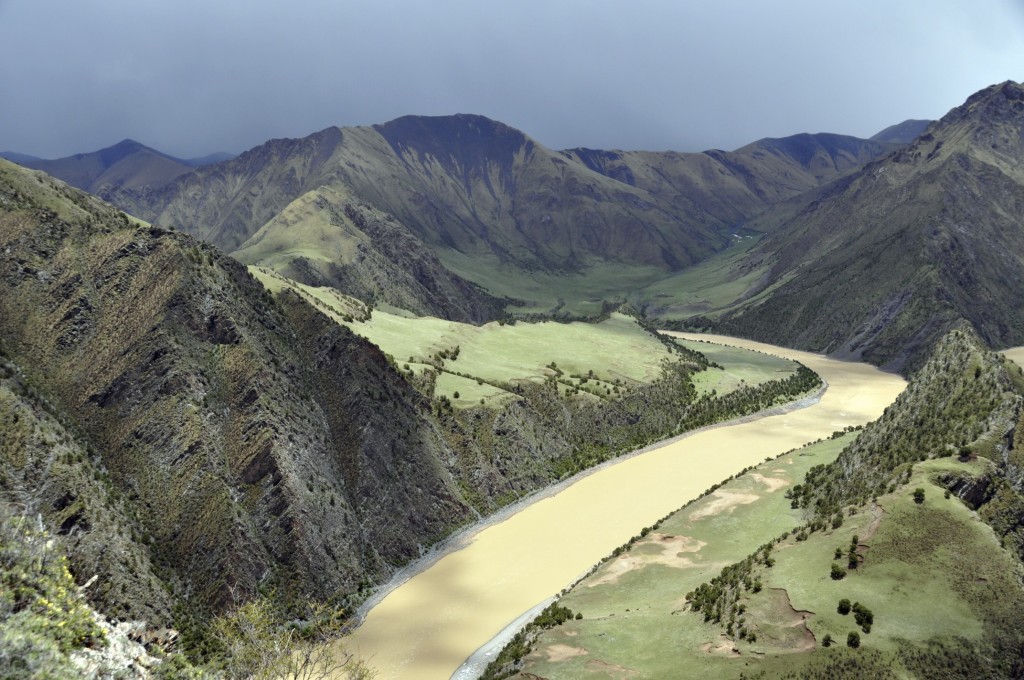
The upper reaches of the Yangtze River in Chumarleb countyཆུ་དམར་ལེབ་རྫོང་ (Yushu prefecture, southern Qinghai)
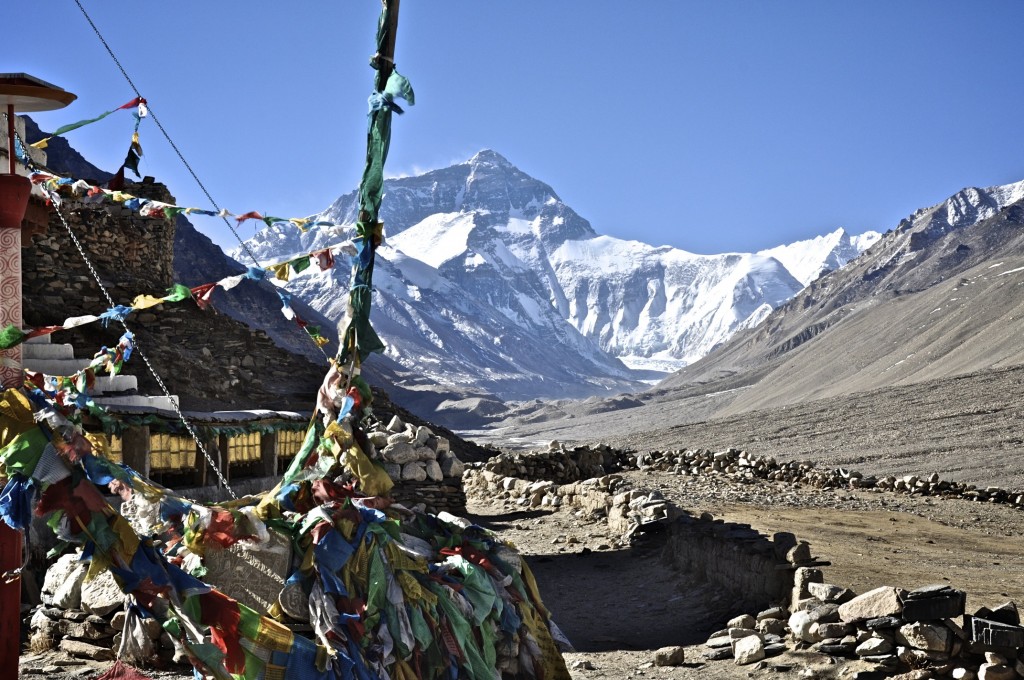
Mt. Everest viewed from Rongphu Monastery
18. What kind of vehicles are used in the TAR?
In years past, the most common vehicle used in the TAR was the Toyota Land Cruiser. However, the past 8 years many of the roads in the TAR have improved dramatically so that full-sized vans are also commonly used. Most of the roads in the Yarlung Valley as well as the Friendship Highway are now entirely paved. Even the road to Mt. Kailash is now paved over 98% of the way. Now, more and more travel agencies are using more fuel-efficient vans and smaller 4 Wheel Drive vehicles.
19. Is it possible to cycle in the TAR?
Yes, it is possible to cycle in the TAR, however you must still have travel permits a tour guide and a “support vehicle” that will follow you along your route. There are no exceptions to this. The guide will ride with the driver in the vehicle. The vehicle normally will stay a few kilometers in front of you as you cycle along your route. Since foreigners must have a guide and support vehicle, cycling in the TAR is quite expensive. More and more people are choosing to cycle in the open Tibetan areas of Kham and Amdo (the route from Kangding to Shangri La is becoming quite popular) in order to avoid having to pay the high costs of cycling in the TAR.
20. Which guidebook is best for using in Tibet?
On my desk I have every current guidebook on Tibet. In my opinion, Lonely Planet publishes the best guidebooks in the world, not just for Tibet, but in general. I am sure some people disagree with me, but this is just my opinion. Lonely Planet does publish a Tibet guidebook, but it really only covers the TAR and a little bit of the Kham region found in western Sichuan. In addition to the LP Tibet guidebook, I recommend the LP China guidebook. The Qinghai, Gansu, Sichuan and Yunnan chapters give good coverage of the Amdo and Kham regions of Tibet. There is no need to purchase the entire LP China guidebook. You can now go to their website and buy the individual chapters that you need for your journey.
In addition to the LP guidebooks mentioned above, I also recommend Gyurme Dorje’s 4th Edition Footprint Tibet Handbook. This book can be a bit overwhelming if you are completely new to Tibet but is actually an excellent resource. It covers every single county of Tibet in all regions. For trekking in Tibet, you MUST get a copy of Gary McCue’s 2010 Trekking in Tibet. It is well written, easy to understand and covers all of the major treks in Tibet, including many in Amdo and Kham.
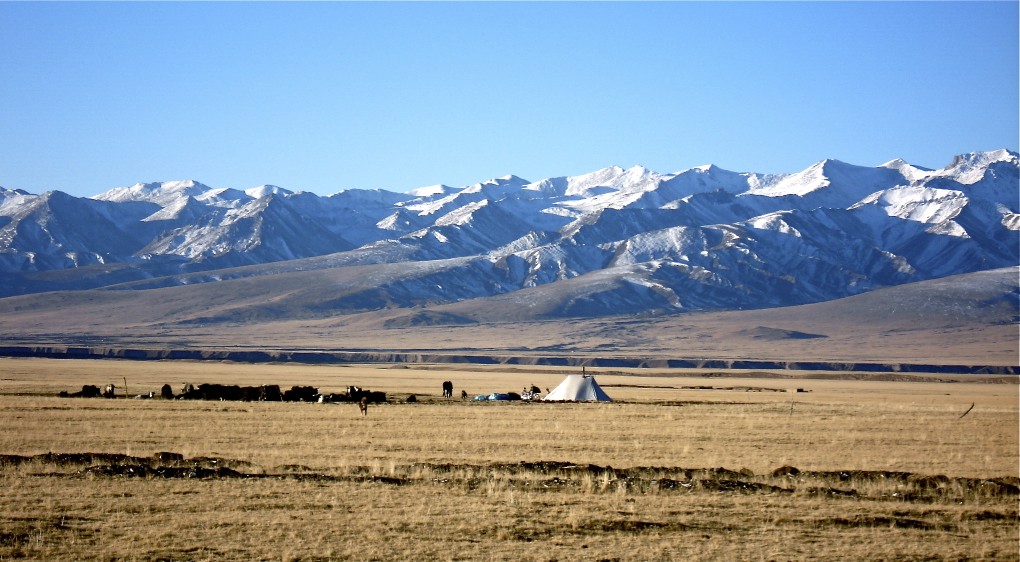
Nomad grasslands of Tsolho prefecture in Amdo (Qinghai Lake)
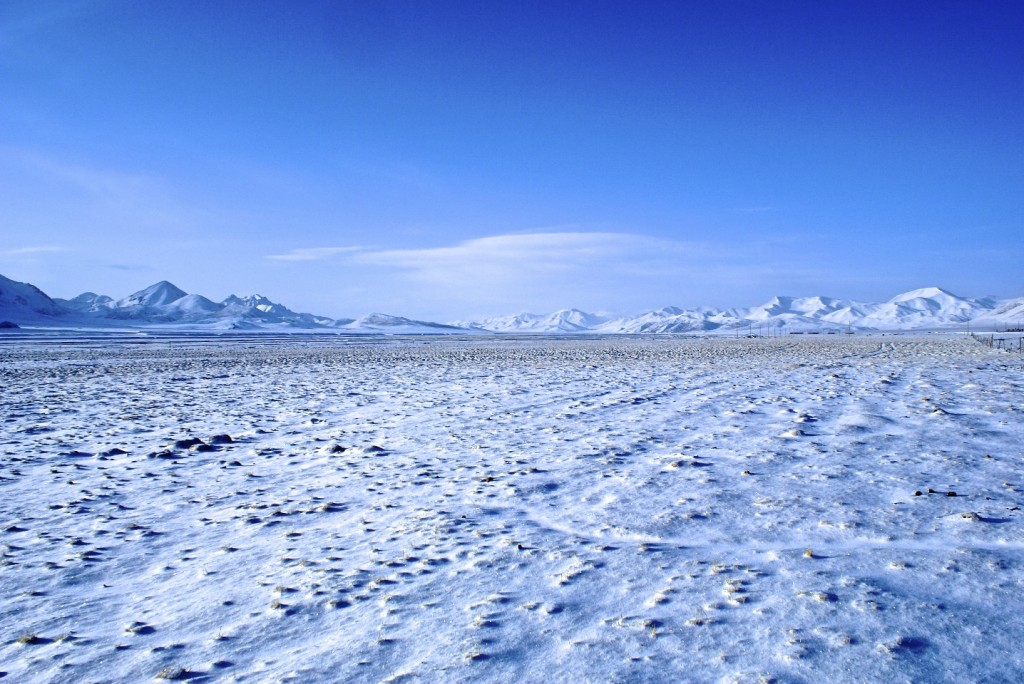
Fresh snow in Mado county in Golok མགོ་ལོག་ཁུལ་རྨ་སྟོད་རྫོང་ (southeast Qinghai)
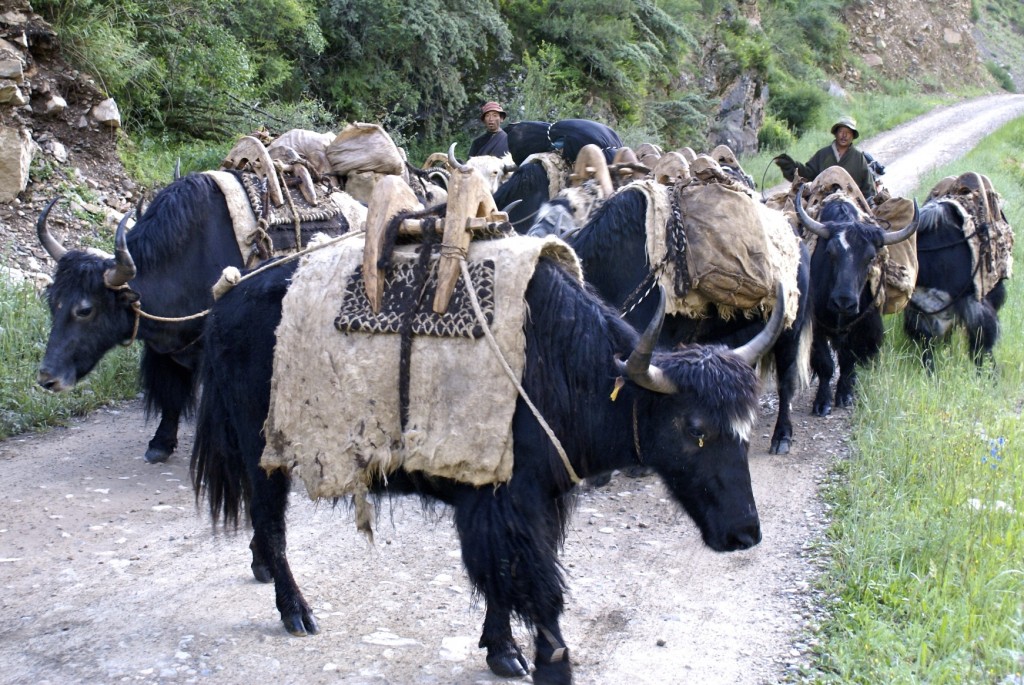
Saddled yaks in Chamdo county ཆབ་མདོ་རྫོང་ (eastern TAR)
21. When is the best time to go to Tibet?
Tibet can be visited anytime of year, though in my opinion some times are better than others. The area between Lhasa and Everest Base Camp has become very popular among Chinese tourists during the summer time (June through early October). Lhasa can be quite crowded with tourists during this time. Getting train tickets to Lhasa are difficult, hotels are often full and tour prices are never discounted. The views of the Himalaya’s are also not the best during the summer months (July and August). For this reason, I stay away from Lhasa and the surrounding area during the summer time.
April and May and mid-October through mid February are my favorite times to go to the TAR. The tourist crowds are small, the weather is generally clear for viewing the Himalaya’s, train tickets are much easier to get and tour prices are lower than in the summer. During the winter time (December-February) there are thousands of Tibetan Buddhist pilgrims in Lhasa celebrating Losar (Tibetan New Year). This is a great time to be in Lhasa.
Kham and Amdo can also be visited all year round, though my favorite time of year for these regions is also the spring and fall. Even during the summer time relatively few travelers are found in Kham and Amdo, though this region is generally cloudy during that season meaning that the views of the mountains are not that good. Winter in Amdo and certain regions of Kham can be extremely cold during the winter with temperatures often reaching -20C to -30C. For this reason, some regions of Amdo and Kham should be avoided during the coldest parts of winter.
Read through the following link for information on the best time to visit Tibet:
22. Which areas of Tibet do you recommend going to?
This is one of the most difficult questions I receive and I receive it often! Over the past 13 years, I have been able to travel extensively across Tibet and I love all areas. Read through the following link of mine for recommendations on which areas of Tibet to go to my post on which area to Go in Tibet:
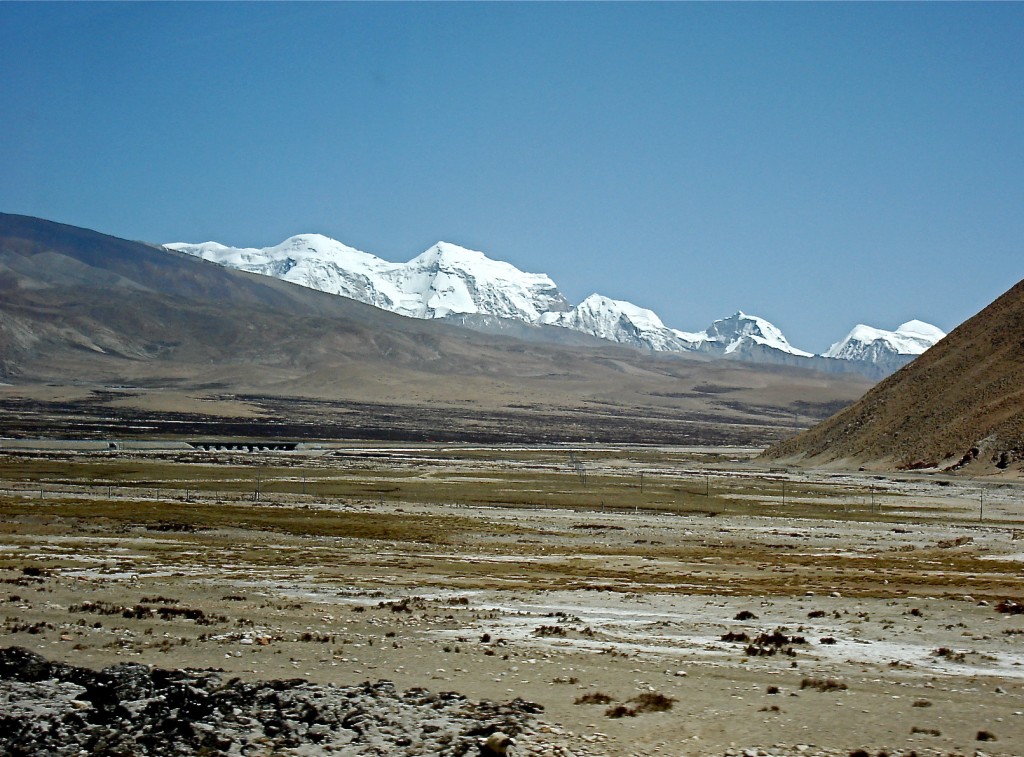
Snow-capped peaks in Nagchu county ནག་ཆུ་རྫོང་ (northern TAR)
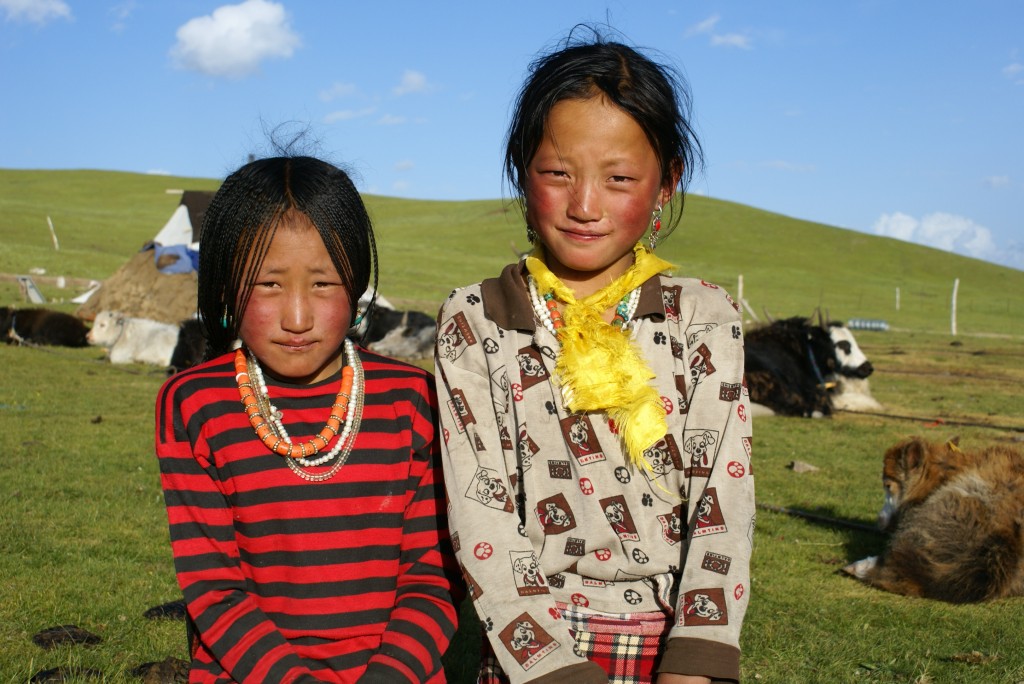
Amdo nomad girls from Tsekog county རྩེ་ཁོག་རྫོང་ (Zeku county in eastern Qinghai)
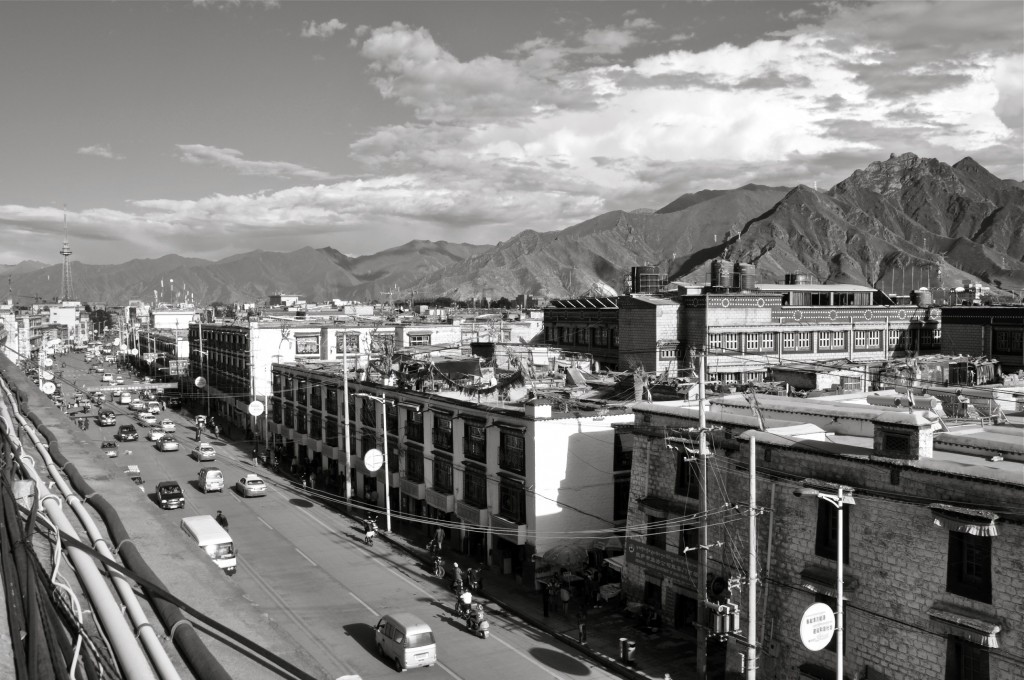
Overlooking the Old Town of Lhasa ལྷ་ས་
23. What are the temperatures like in Tibet?
Tibet, including the regions of Kham and Amdo, is a huge area covering over 1/4 of the land mass of China. It is larger than most countries. Because of its size, Tibet has varying climates and temperatures. Some areas of Tibet indeed are extremely cold, while others can actually be quite mild during the summer. Winter time is generally quite cold across Tibet with some regions, parts of Amdo in particular, being deathly cold.
In general, most travelers to Tibet go between April and October. During this time, most of Tibet is relatively mild. Most people are surprised with how warm (and even hot) Lhasa and the Yarlung Valley can get during the summer time. In early September 2010 I took the train to Lhasa and in my compartment, there were 3 Chinese tourists going to Lhasa for the first time. They were all convinced that Lhasa was going to be -10C with heavy snow!! They were all wearing clothes as if they were going to summit Everest! You can only imagine the look on their faces when we arrived in Lhasa and it was +25C with lots of sunshine!! Tibet is a cold place, especially in the winter, but it is still probably warmer than you think. The region in and around Lhasa is one of the mildest regions in all of Tibet.
Here are the average temperatures throughout the year for selected towns across the Tibetan Plateau. These numbers are based on the weather averages of the past 15 years.
TIBET AUTONOMOUS REGION
Lhasa: January High: 8.3C / 47F Jan Low: -5.5C / 22F
April High: 15.5C / 60F April Low: 4.4C / 40F
July High: 22.8C / 73F July Low: 13.3C / 56F
October High: 17.2C / 63F Oct Low: 4.4C / 40F
Shigatse: January High: 7.2C / 45F Jan Low: -9.4C / 15F
April High: 15C / 59F April Low: 1.7C / 35F
July High: 21.1 C / 70F July Low: 10.6C / 51F
October High: 15.5C / 60F Oct Low: 0C / 32F
Ali (nearest large town to Mt. Kailash): January High: -5C / 23F Jan Low: -18.3C / -1F
April High: 7.2C / 45F April Low: -6.1C / 21F
July High: 20.6C / 69F July Low: 8.9C / 48F
October High: 6.7C / 44F Oct Low: -6.1C / 21F
Old Tingri (nearest to Everest Base Camp): January High: 3.9C / 39F Jan Low: -13.3C / 8F April High: 10.6C / 51F April Low: -4.4C / 24F
July High: 18.3C /65F July Low: 8.3C / 47F
October High: 11.7C / 53F Oct Low: -3.9C / 25F
Chamdo (far eastern TAR): January High: 8.9C / 48F Jan Low: -7.8C / 18F
April High: 15C / 59F April Low: 2.2C / 36F
July High: 23.3C / 74F July Low: 12.2C / 54F
October High: 16.1C / 61F Oct Low: 2.8C / 37F
Nagchu (far northern TAR): January High: -1.7C / 29F Jan Low: -16.1C / 3F
April High: 6.1C / 43F April Low: -6.1C / 21F
July High: 15.6C / 60F July Low: 6.1C / 43F
October High: 6.7C / 44F Oct Low: -4.4C / 24F
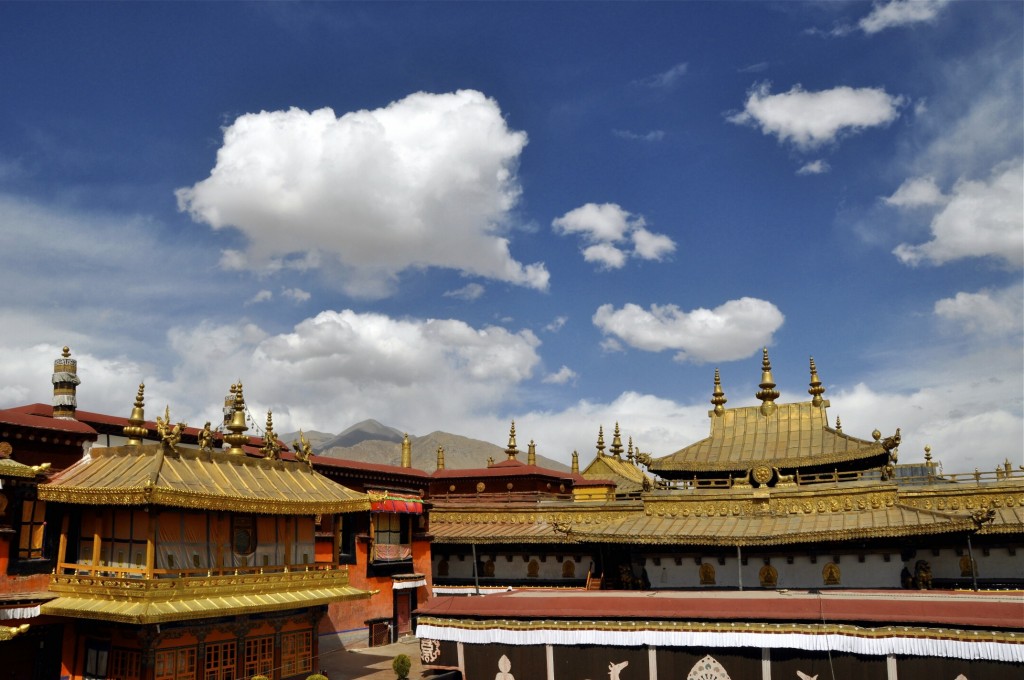
The Jokhang Temple ཇོ་ཁང་ in Lhasa
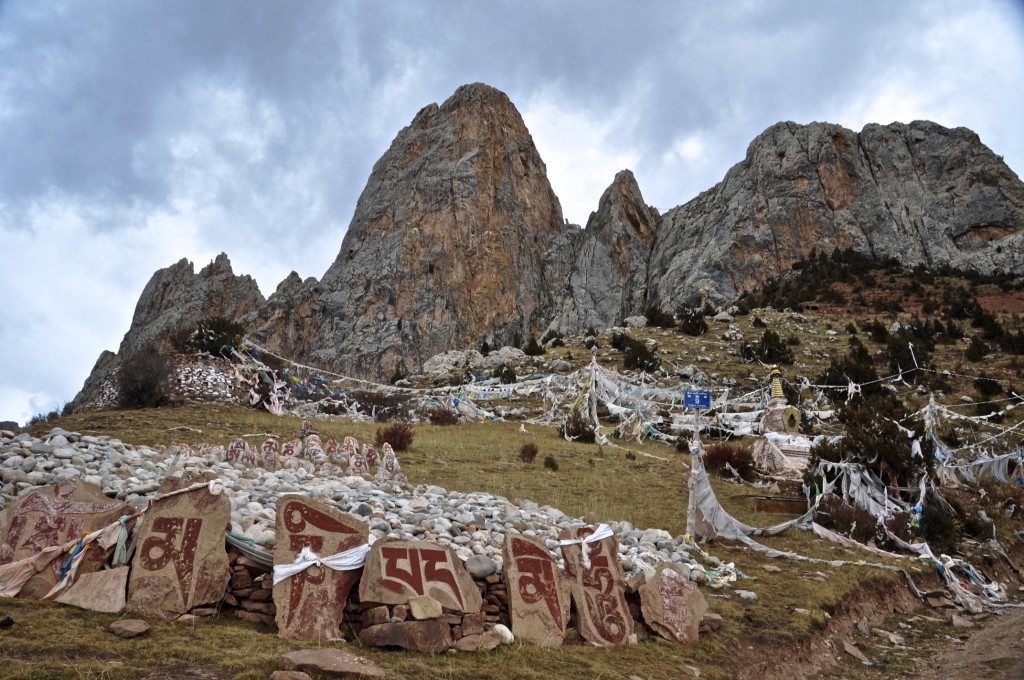
Prayer stones in Nangchen county in Yushu prefecture ཡུལ་ཤུལ་ཁུལ་ནང་ཆེན་རྫོང་ (southern Qinghai)
QINGHAI PROVINCE
Xining: January High: 0C / 32F Jan Low: -14.4C / 6F
April High: 15C / 59F April Low: 2.2C / 36F
July High: 23.9C / 75F July Low: 12.8C / 55F
October High: 12.8C / 55F Oct Low: 1.7C / 35F
Jyekundo (far southern Qinghai): January High: 2.8C / 37F Jan Low: -11.7C / 11F
April High: 11.7C / 53F April Low: -0.6C / 31F
July High: 20.6C / 69F July Low: 9.4C / 49F
October High: 10.6C / 51F Oct Low: -0.6C / 31F
Gangtsa (north shore of Qinghai Lake): January High: -5C / 23F Jan Low: -17.2C / 1F April High: 7.8C / 46F April Low: -3.3C / 26F
July High: 16.1C / 61F July Low: 7.8C / 46F
October High: 6.7C / 44F Oct Low: -4C / 25F
Sog (far eastern Qinghai): January High: -1.1C / 30F Jan Low: -20C / -4F
April High: 8.3C / 47F April Low:-4C / 25F
July High: 16.1C / 61F July Low: 6.7C / 44F
October High: 7.2C / 45F Oct Low: -4.4C / 24F
Maduo (near Mt. Amnye Machen): January High: -6.1C / 21F Jan Low: -20C / -4F
April High: 4C / 39F April Low: -7.2C / 19F
July High: 13.3C / 56F July Low: 4.4C / 40F
October High: 2.8C / 37F Oct Low: -6.1C / 21F
Wudaoliang (southwestern Qinghai): January High: -8.3C / 17F Jan Low: -20C / -4F April High: 2.2C / 36F April Low: -9.4C / 15F
July High: 11.1C / 52F July Low: 2.8C / 37F
October High: 0C / 32F Oct High: -9C / 16F
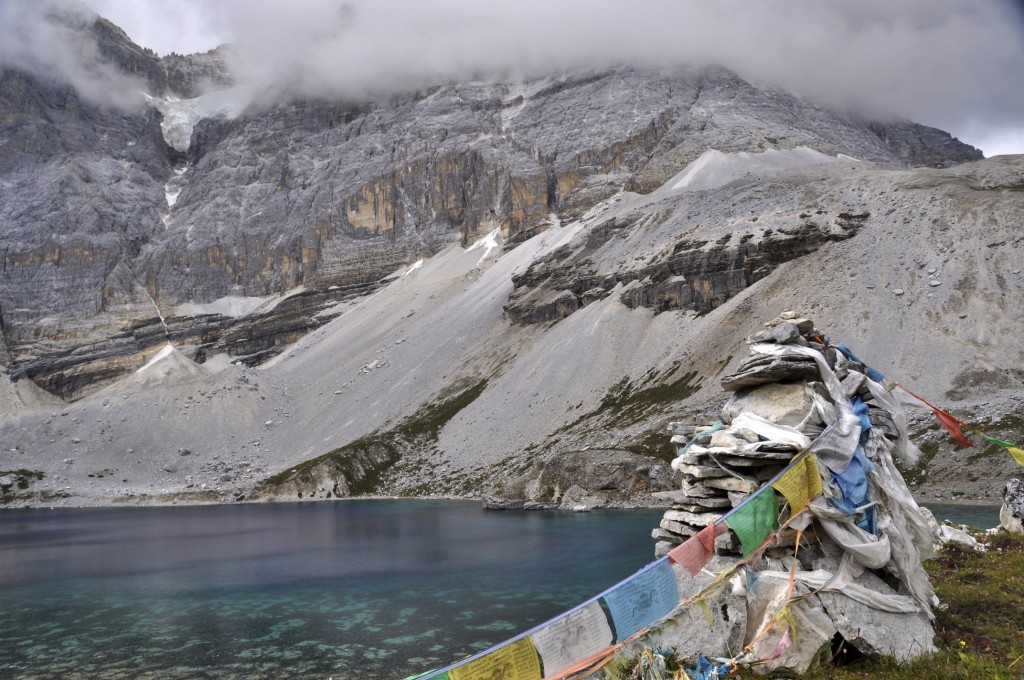
The Yading Nature Reserve ཉིན་རྟེན་ in Dabpa county དཀར་མཛེས་ཁུལ་འདབ་པ་རྫོང་ (Daocheng county in western Sichuan)
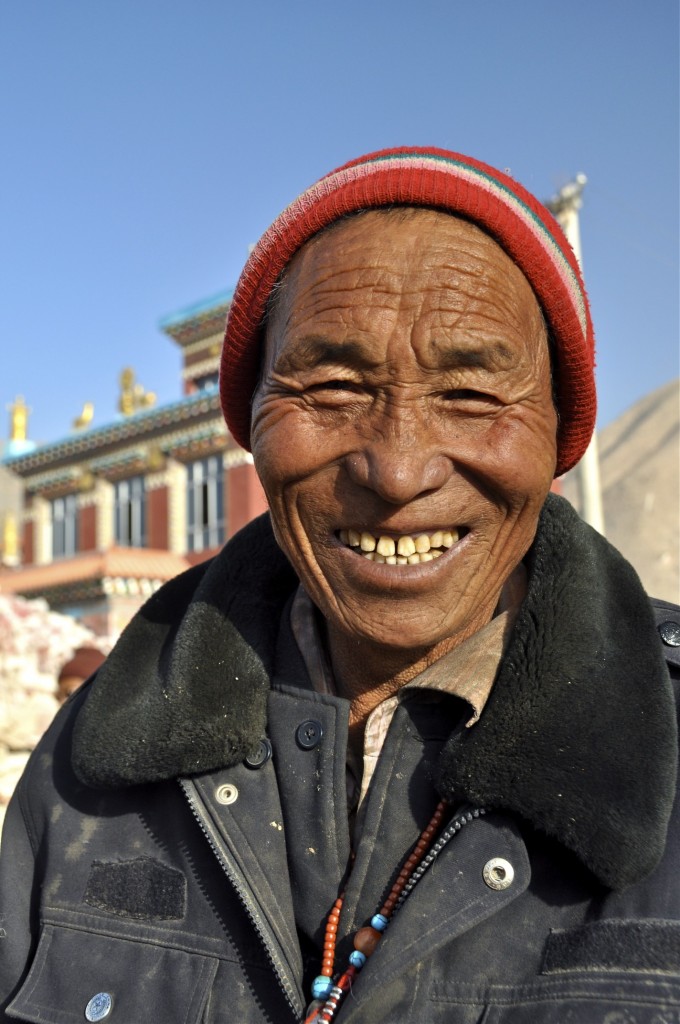
A Kham man from Jyekundo སྐྱེ་དགུ་མདོ་ (Yushu in southern Qinghai)
SICHUAN PROVINCE
Kangding: January High: 2.2C / 36F Jan Low: -5C / 23F
April High: 13.3C / 56F April Low: 3.3C / 38F
July High: 20C / 68F July Low: 13.3C / 56F
October High: 11.7C / 53F Oct Low: 5C / 41F
Lithang: January High: 4.4C / 40F Jan Low: -10C / 14F
April High: 10C / 50F April Low: -1.1C / 30F
July High: 17.2C / 63F July Low: 8.3C / 47F
October High: 11.1C / 52F Oct Low: 0.6C / 33F
Dege: January High: 7.2C / 45F Jan Low: -7.2C / 19F
April High: 14.4C / 58F April Low: 2.2C / 36F
July High: 22.8C / 73F July Low: 10.6C / 51F
October High: 15C / 59F Oct Low: 2.2C / 36F
Zoige: January High: 0.6C / 33F Jan Low: -15.6C / 4F
April High: 8.9C / 48F April Low: -2.2C / 28F
July High: 17.2C / 63F July Low: 7.2C / 45F
October High: 8.3C / 47F Oct Low: -1.7C / 29F
Daocheng/Yading Nature Reserve: January High: 6.7C / 44F Jan Low: -11.1C / 12F April High: 11.7C / 53F April Low: 0C / 32F
July High: 18.3C / 65F July Low: 9C / 48F
October High: 13.3C / 56F Oct Low: 0.6C / 33F
Ma’erkang: January High: 9C / 48F Jan Low: -6.7C / 20F
April High: 18.3C / 65F April Low: 3.3C / 38F
July High: 24.4C / 76F July Low: 11.7C / 53F
October High: 16.7C / 62F Oct Low: 4.4C / 40F
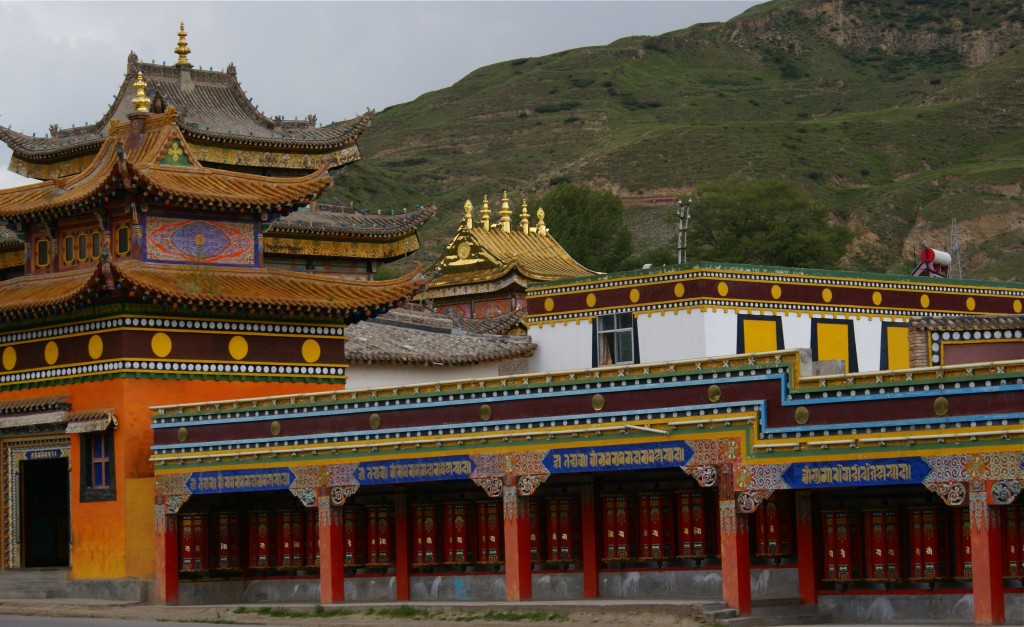
Monastery in Rebkong རེབ་གོང་ (Tongren in eastern Qinghai)
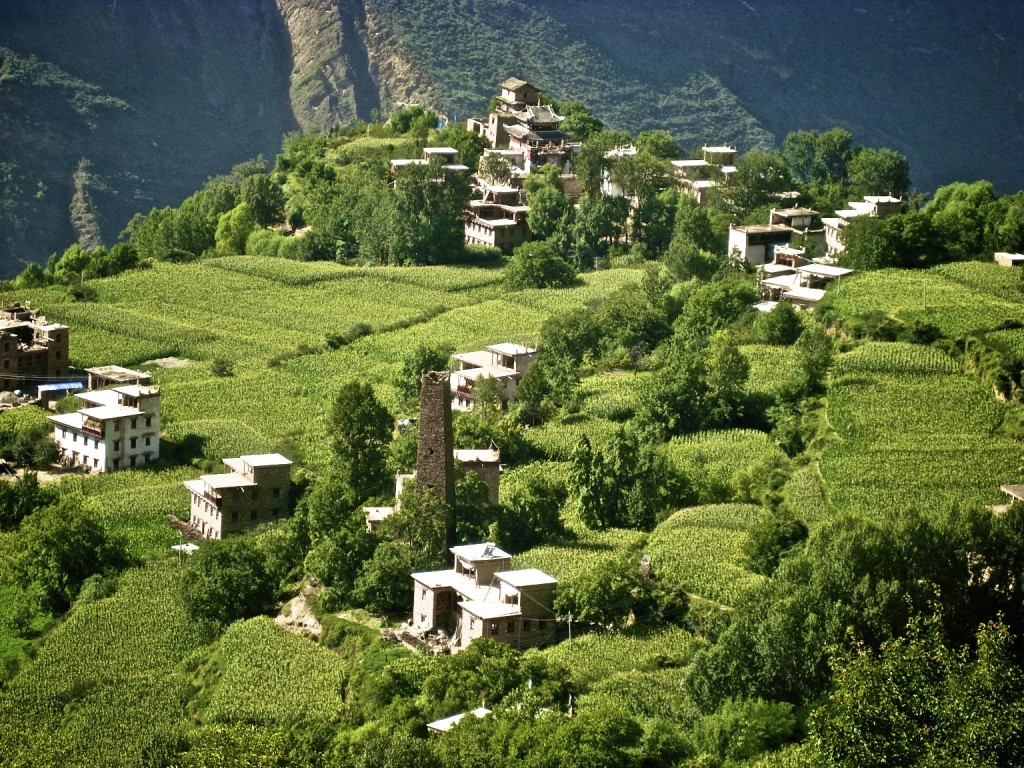
Stone towers in Rongtrak county རོང་བྲག་རྫོང་ (Danba in western Sichuan)
GANSU PROVINCE
Xiahe (Labrang Monastery): January High: 0C / 32F Jan Low: -15.6C / 4F
April High: 10.6C / 51F April Low: -1.7C / 29F
July High: 19C / 66F July Low: 9C / 48F
October High: 10C / 50F Oct Low: 0C / 32F
YUNNAN PROVINCE
Dechen: January High: 5C / 41F Jan Low: -5.6C / 22F
April High: 10.6C / 51F April Low: 1.7C / 35F
July High: 19C / 66F July Low: 11.1C / 52F
October High: 12.8C / 55F Oct Low: 3.3C / 38F
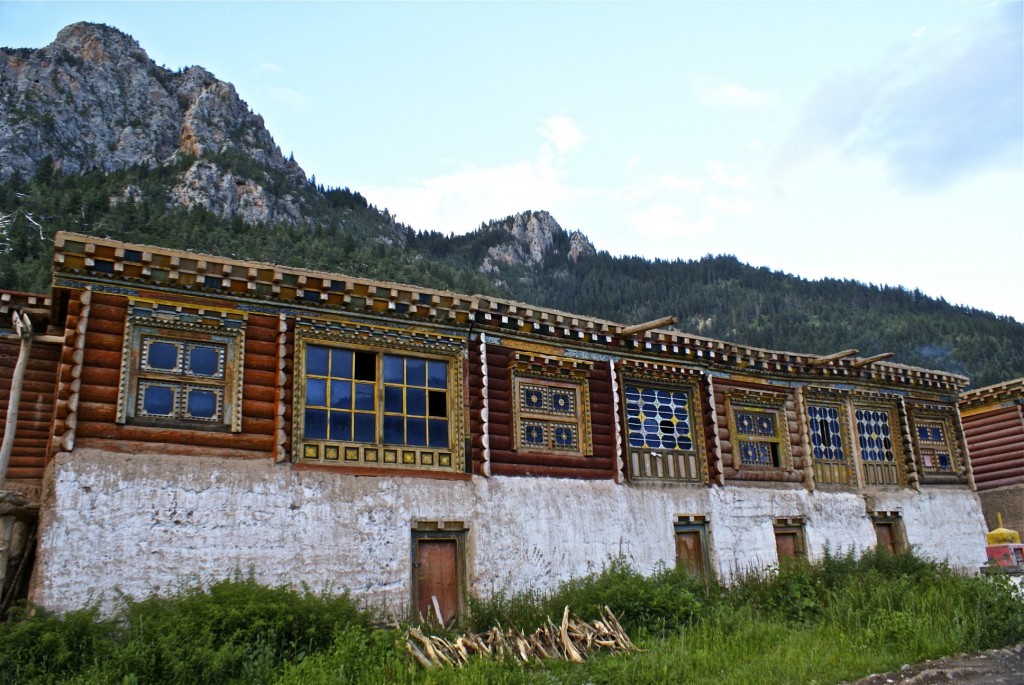
Remote monastery in Chamdo county ཆབ་མདོ་རྫོང་ (eastern TAR)
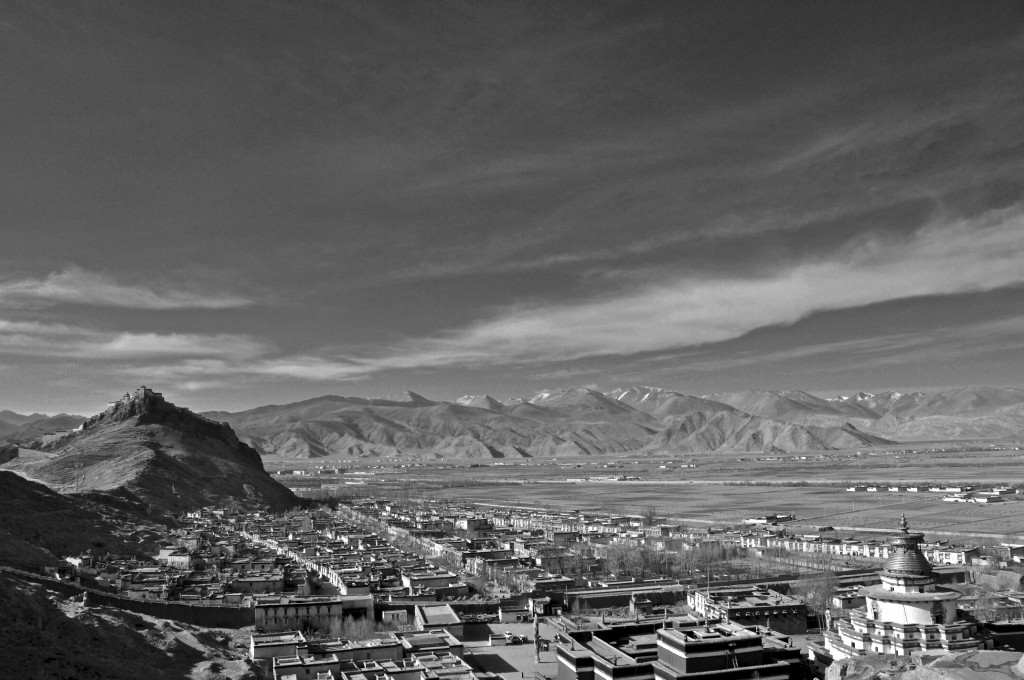
Overlooking Gyantse རྒྱལ་རྩེ་ (central TAR)
24. When is the rainy season?
The rainy season in Tibet begins in mid/late June and lasts until early to mid-September. The rainy season in Tibet is not nearly as wet as south and southeast Asia, but it does rain and there are quite a bit of clouds. If you are coming to Tibet to get good views of the Himalaya’s or other big peaks, I recommend waiting until after the rainy season to go. You can trek during this time, but be sure to bring clothes suitable for wet weather.
25. I plan to travel from mainland China to the TAR and then back to mainland China. Do I need a double entry Chinese visa?
No, all you need is a single entry visa. The TAR is firmly a part of China. There is no Immigration or Customs crossing when going from mainland China to the TAR.
26. I am a foreigner but my spouse is Chinese and holds a Chinese ID card? Do I still need travel permits and to be on an organized tour to go to the TAR?
Yes, you still have to follow all of the same regulations as other travelers. Though your wife does not require to be on an organized tour, you still have to be.
27. I am a foreigner but my spouse is a Tibetan who lives in the TAR. Do I still need to be on an organized tour to go the TAR?
The answer varies from time to time, but normally you do not need to be on an organized tour. Your spouse should be able to contact the Public Security Bureau (PSB) in his/her hometown and get you a special permit that allows you to go to your spouse’s hometown without travel permits. This normally takes several weeks or even months to arrange, but should be possible.
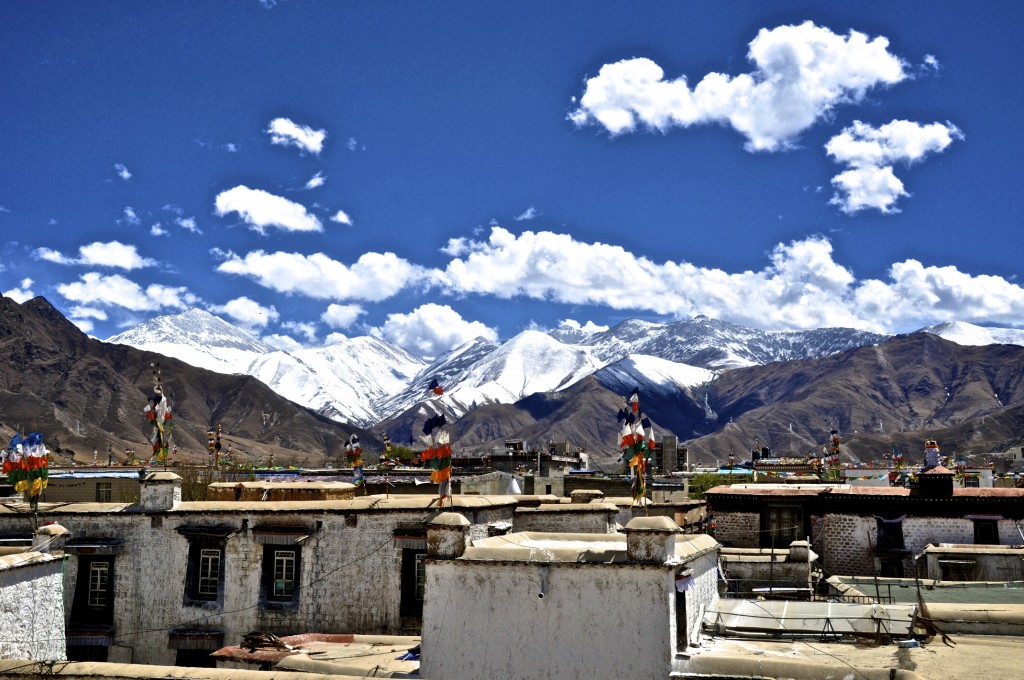
Old Town Lhasa
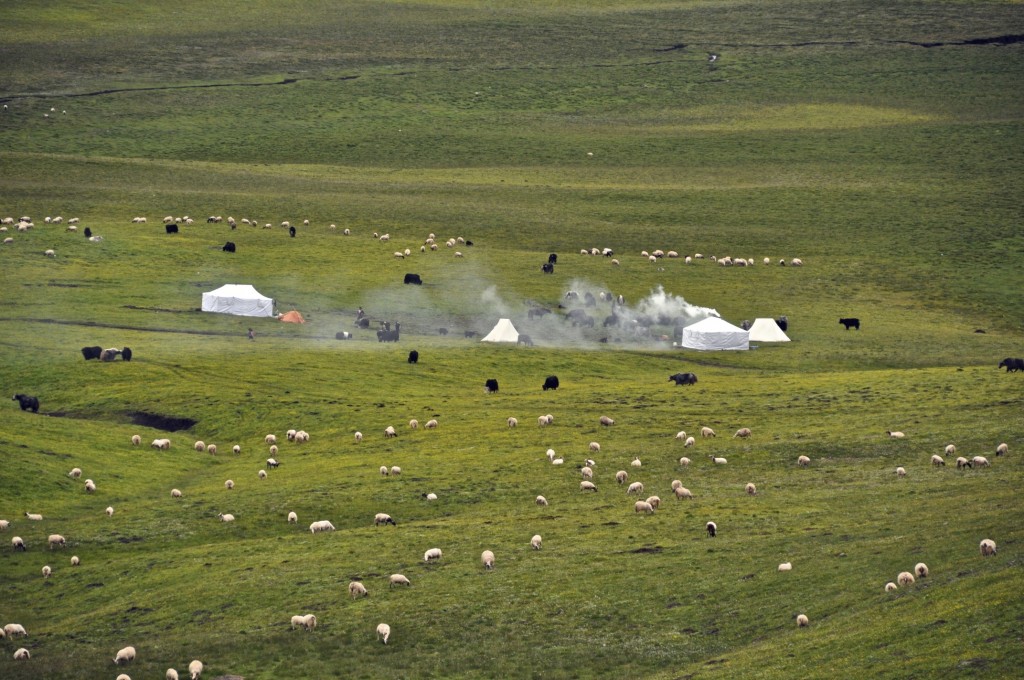
Amdo grasslands of Sangchu county in Ganlho prefecture ཀན་ལྷོ་་ཁུལ་བསང་ཆུ (Xiahe in southwest Gansu)
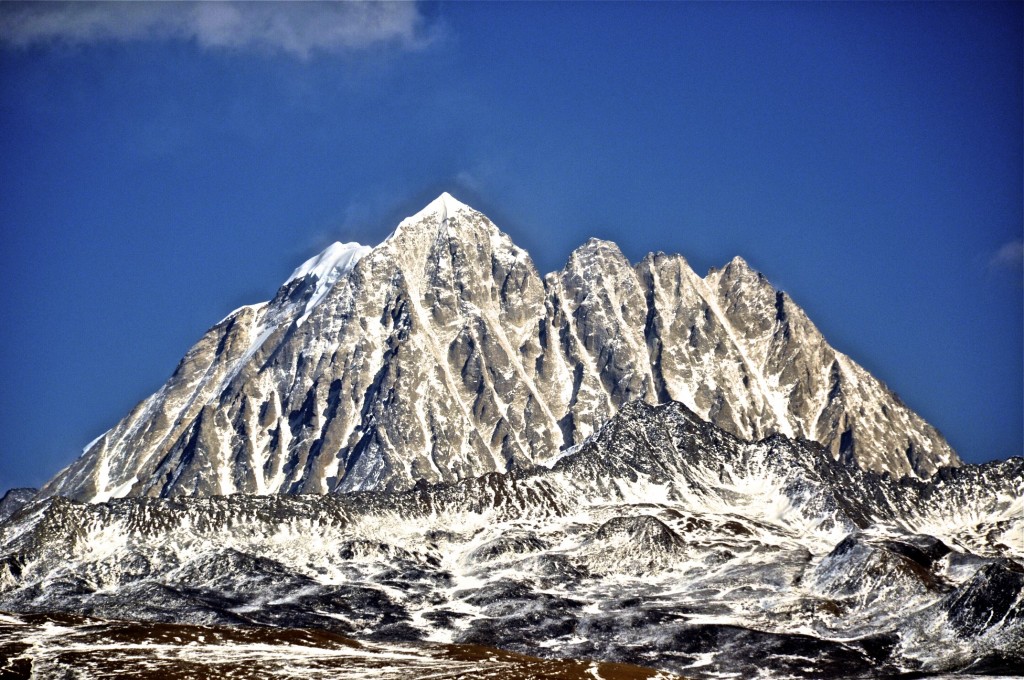
Mt. Zhara Lhatse near Lhagang ལྷ་སྒང་ (Tagong in western Sichuan)
28. Can I get a visa extension in Lhasa or anywhere else in the TAR?
Before March 2008, you could often times get a visa extension in Lhasa, but since then it is extremely rare. The Tibet Tourism Bureau will usually not grant travel permits to people whose visas will expire during their Tibet tour. Do not count on being able to get a visa extension in Lhasa or anywhere else in the TAR.
29. Is there anyplace on the Tibetan Plateau where I can get a visa extension?
Yes, you can get up to a 30 day visa extension in Kangding (Dartsendo), Yushu (Jyekundo), Shangri La (Gyelthang), Ma’erkang (Barkham), Xining, Golmud, Songpan and Hezuo (Tsoe). You can sometimes get a visa extension in Dawu (Machen) in Golog prefecture as well.
30. I have a business (F) visa. Can I get travel permits for the TAR?
Yes, you can, but you will have to have a letter from your inviting company that states your full name, nationality, passport number and position at the company. The letter should be written in Chinese on official letterhead and needs to be dated and stamped with your company’s official seal. This letter then needs to be scanned and emailed to the travel agency you are using and they will turn it in to the Tibet Tourism Bureau.
31. I have a resident visa (either student visa or work permit) for China. Can I get travel permits for the TAR?
Yes, you can, but you will have to have a letter from your university or workplace that states your full name, nationality, passport number and position at the company. The letter should be written in Chinese on official letterhead and needs to be dated and stamped with your school’s/company’s official seal. This letter then needs to be scanned and emailed to the travel agency you are using and they will turn it in to the Tibet Tourism Bureau.
32. I have a Diplomatic Passport. Can I get travel permits for the TAR?
Usually you cannot get permits for the TAR.
33. I have a journalist visa. Can I get travel permits for the TAR?
Usually you cannot get permits for the TAR.
34. Is Tibet a safe place to travel?
Having lived in various regions of Tibet for the past 12 years, I can say that Tibet is very safe, even for solo and female travelers.
35. I have heard others say to NOT list Tibet on my Chinese visa application. What do you think I should do?
I do not recommend listing Tibet on your visa application. There is a good chance that your Chinese visa application will be denied. I recommend just listing a couple of major cities that you will be going to such as Beijing or Chengdu. Once your Chinese visa is issued, you are free to travel to places not listed on your visa application, including Tibet.
36. Is there an official website regarding travel to the TAR that has updated information on closures, travel permits, weather and other important information?
No, the Chinese government does not provide an official website with travel information on the TAR or other regions of the Tibetan Plateau. Getting accurate, up-to-date travel information on Tibet can be difficult. That is one of the main reasons that I have this website.
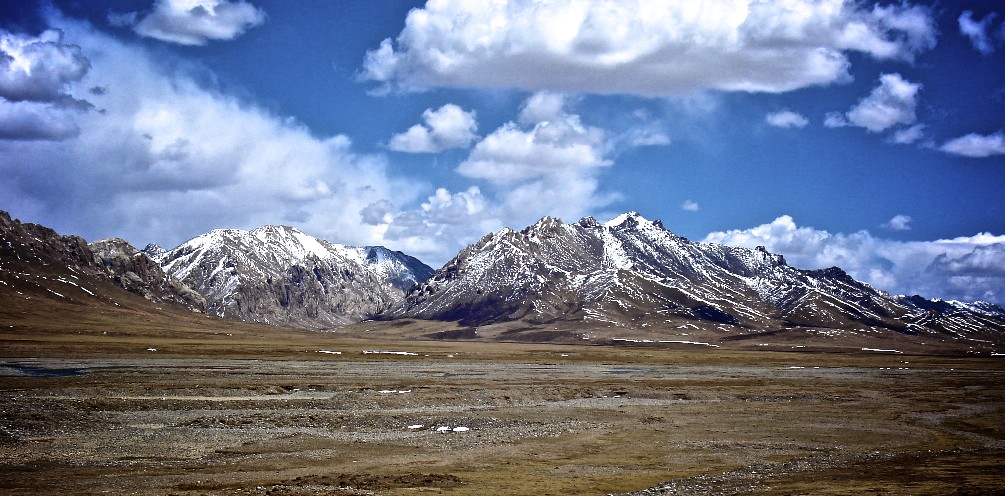
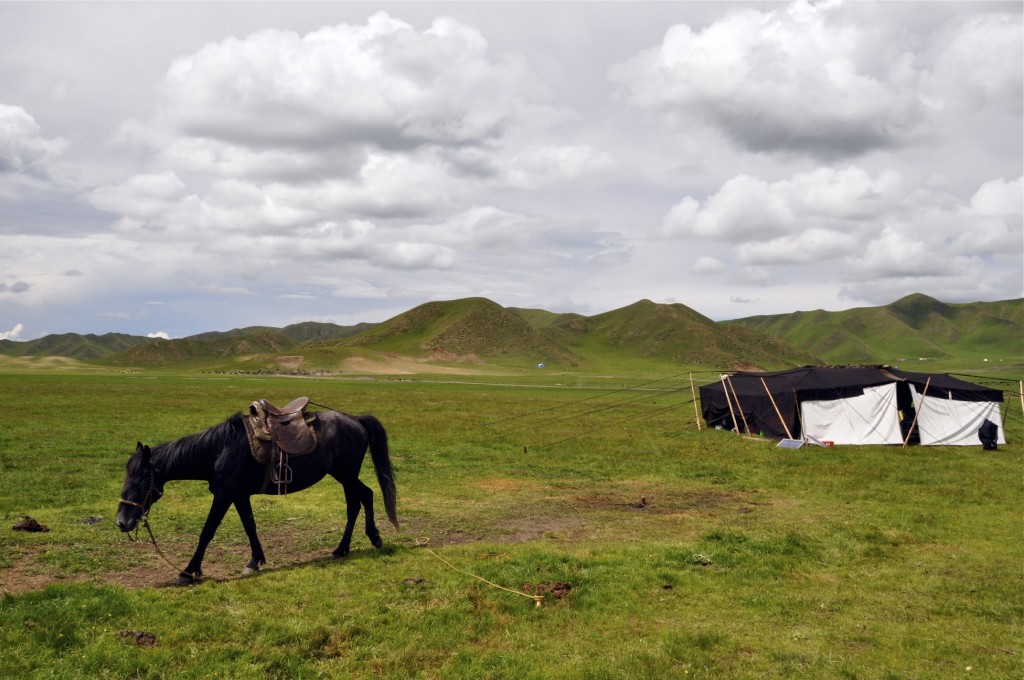
Nomad grasslands of Ngawa prefecture, Zoige county རྔ་བ་ཁུལ་མཛོད་དགེ་རྫོང་ (northern Sichuan)
37. Does my guide have to be with me all day, every day?
Your guide does have to be with you each day while you are in the TAR, but the guide does not necessarily have to be with you all day long. In Lhasa, some of the more famous temples and monasteries will require your guide to be with you in order to enter. However, much of the city you can explore on your own without your guide. I usually tell people to have their guide meet them sometime after breakfast (between 9:30 and 10am). Have your guide take you to a couple of main attractions in Lhasa and then around lunch time, or slightly after, tell your guide you are going to take a short rest at your hotel. Tell your guide that if you need anything that you will call him/her. This way you can explore the city on your own without your guide. Sometimes, when there is a serious threat of instability in Lhasa, the government will require the guide to be with you at all times, but this is not common.
38. I have heard reports of guidebooks on Tibet being taken by officials. Is this true?
In some cases this is true. If you are going from mainland China to the Tibet Autonomous Region, it is highly unlikely that your guidebook on Tibet will be confiscated. Contrary to popular belief, there is no “border” between mainland China and the TAR since they are part of the same country. If you take the train or bus to Lhasa from Xining, you will never know when you cross into the TAR unless someone tells you or you have a very detailed map (entering the TAR from western Sichuan, southern Qinghai or northwest Yunnan is a different story as there are checkpoints at these places, but still no Immigration to cross). There is no Immigration Station of any kind that would check your bags.
The problem that some travelers have had, including myself, is with the Nepal-Tibet border crossing.The Nepal side is fine. It is when you enter or exit Chinese customs where problems could arise. In 2009 I had my Lonely Planet Tibet guidebook taken from me as I was LEAVING China! I might see a reason for them to take the guidebook if I were entering China, but I saw no reason why they should confiscate it as I am preparing to enter into Nepal. I argued my case, but they still took it. The customs official then showed me a large stack of guidebooks (mostly LP guides, but not entirely) taken over the years.
One thing you could do is to bury your Tibet guidebook deep in your bag and wrap dirty clothes around it (particularly underwear…who wants to pick up dirty underwear!). Another option is to purchase the PDF of the LP Tibet guidebook and just keep it on your computers hard drive. It is extremely unlikely that customs will ask to go through your computer.
39. Is English spoken widely across Tibet?
No, besides the popular hotels and restaurants in Lhasa, English is rarely understood in Tibet. Most of Tibet is very remote and undeveloped and few people are able to speak English. Chinese is widely spoken by Tibetans who live in Lhasa, Shigatse, Dartsendo, Shangri La and a few other larger towns in Tibet, but in rural regions of Tibet many Tibetans, especially those over 35 years old, still cannot (or will not) speak Chinese. In these remote regions, Tibetan remains the only language that is understood. Don’t let this stop you from traveling the region though. Tibetans are extremely hospitable, friendly and helpful and will do their best to communicate with you despite the language barrier. Chinese will be spoken at all county level bus stations.
40. Is it true that the Chinese Communist Government gets the majority of the cost of tours to the TAR?
Absolutely not! The actual cost of the permits are very minimal. Besides entrance fees (which are VERY high!!) to places like Yamdrok Lake, Everest Base Camp and a few other nature reserves, the small price of the permits is really the only money that the government directly makes from your tour. Now if you use a Chinese Communist Government owned travel agency, such as China International Travel Services (CITS) then more of your tourism money will go to the government. But, with all of the smaller Tibetan owned travel agencies in Lhasa and Xining, there is absolutely no need to use agencies such as CITS. Support the Tibetan people by using as many Tibetan owned businesses as possible.
41. Why are the costs of tours to the TAR so expensive?
Travel to the TAR is not considered “cheap” because all foreigners must have travel permits, a tour guide and a private vehicle with a driver. The cost of vehicles in China, especially imported vehicles such as the Toyota Land Cruisers that are usually used in Tibet, is much higher than in North America and Europe. Even used Land Cruisers sell for much higher (as much as double) than they do elsewhere. So the higher vehicle costs add to the tour price. Another factor is fuel prices. Fuel prices on the Tibetan Plateau are probably a little less than most of Europe, but is still considerably higher than in North America. The fuel and vehicle charges make up more than 80% of the total tour price. Guides are usually paid between 240 RMB and 300 RMB per day, which also adds up on a 10 or 14 day tour. Though the roads in the TAR are improving, the distances are still far between places, especially if you are traveling to Mt. Kailash in far western Tibet. Tour prices are normally based on the distance traveled so if you are doing a lot of overland driving to places like Everest, the Nepal border or Mt. Kailash, the price is going to be higher than if you are just staying in the Lhasa-Nam Tso-Shigatse area.
Vehicle and guide prices can be split by up to 5 people making the cost of traveling in the TAR more affordable. There are several travel agencies in Lhasa, Chengdu and Xining that can find a small group for travelers to join to lessen the cost per person. For more information on which travel agencies to contact that can help find a group for you to join, email me at thelandofsnows@gmail.com.
42. Which agency do you recommend using for my upcoming Tibet tour?
Tibet, along with Amdo and Kham, is a huge region covering over 25% of the land mass of China. Most agencies specialize in only certain areas of Tibet, such as the TAR, Amdo or Kham. Few specialize in all 3 regions. I only recommend using Tibetan owned businesses as I believe it is important for foreign travelers to support the Tibetan people by using as many Tibetan owned businesses as possible during their time in Tibet. For a recommendation on which agency to use, email me your proposed itinerary and how long you plan to travel in Tibet and I will get back to you as soon as possible. My email address is: thelandofsnows@gmail.com.
43. Do I have the freedom to design my own itinerary or do I have to take a pre-arranged “package tour”?
For the most part, you have complete freedom to design your own itinerary for Tibet. The main reason why travel agencies offer “package tours” is because most travelers are not very familiar with Tibet and are not sure which places to go to. Offering package tours makes it easier for travelers to just choose a pre-arranged tour without the hassle of doing any real research of where they want to go. But, if you are like me, you enjoy researching the region and prefer to build your own itinerary going only to the places you want to go to. Nearly every travel agency that arranges tours to Tibet will allow you to build your own itinerary. Do keep in mind that not all regions of the TAR, Amdo and Kham are always open.
44. Is it difficult to arrange/get train tickets to Lhasa?
During the high season (June through early October), it can be extremely difficult to get train tickets to Lhasa. The reason is that Lhasa has now become a major tourist destination among Chinese travelers. During the high season, as many as 50,000 tourists a day pour into Lhasa. In 2013, Tibet received nearly 13 million tourists! Lhasa no longer is the remote “Forbidden City” it once was. Most travelers to the TAR prefer to take the train to Lhasa making train tickets extremely difficult to get, especially if you are trying to get them on your own. It is best to have the agency that you use for your Tibet tour also arrange your train tickets to Lhasa for you as well. Most agencies have some connections with either the train station or a larger government owned travel agency so that they can get train tickets more easily (though it still can be difficult).
Many times a travel agency cannot guarantee you train tickets for the specific day you want to travel because getting train tickets are so difficult during the high season. If your schedule allows you, it is a little easier to fly to Lhasa and then take the train leaving Lhasa. Train tickets departing Lhasa are still difficult to get, but not as difficult as going to Lhasa.
45. I am having big problems getting train tickets from Xi’an to Lhasa. Why is that?
There are actually no trains to Lhasa that originate in Xi’an. The trains from Xi’an to Lhasa actually originate in the mega cities of Shanghai, Chongqing and Guangzhou. They just pass through Xi’an. The railway station does keep a select number of tickets to Lhasa for travelers in Xi’an, but the number of tickets is relatively small. By the time the train to Lhasa reaches Xi’an or any other smaller Chinese city, the train has passed through hundreds of millions of people and there are few tickets remaining. It is best to take the train to Lhasa from a city in which the train originates. Trains to Lhasa originate in Beijing, Shanghai, Guangzhou, Chengdu, Chongqing, Lanzhou and Xining.
46. Which city do you recommend taking the train fro
I recommend taking the train from Xining for 2 main reasons. Xining, capital of Qinghai province and the largest city on the Tibetan Plateau, is the actual starting point of the Tibetan Railway. It lies at an elevation of 2275m and is a good place to spend a couple of nights at in order to acclimatize to the higher elevation of Lhasa. Spending a couple of nights in Xining will reduce (but NOT eliminate) the chances of getting serious altitude sickness. Another reason why I recommend taking the train to Lhasa from Xining is that it is generally easier to get train tickets in Xining. Unlike the other cities that have trains originating to Lhasa, Xining is a small city by Chinese standards. The smaller population means that fewer people are trying to get tickets on the coveted Lhasa Train. It can still be difficult to get train tickets to Lhasa from Xining during the peak high season, but not as difficult as Chengdu, Beijing, Shanghai or any other larger city.
47. Do you recommend travelers insurance when traveling in Tibet?
Absolutely! Having a travelers insurance policy that protects you against cancelled tours, cancelled/delayed flights and any unplanned medical emergency is highly recommended. This year the TAR was closed for nearly 2 months and I received several emails from travelers who had to cancel their Tibet tour because of the closure. A reputable travel agency should refund you most of the tour cost, but it is still good to have a policy that covers you as well. Also, hospitals in Tibet are generally well below Western standards. Having a medical policy that would transport you to a high quality hospital in Hong Kong, Singapore or Thailand is important.
48. Can I arrive in Dram/Zhangmu at the Nepal/Tibet border and arrange a tour of Tibet there?
No, in order to go from Nepal into Tibet, you must organize your tour either from one of the many travel agencies in Kathmandu or one from Lhasa. The agency must arrange a Group Chinese visa for you and your guide, vehicle and driver will meet you at the border. It is not possible to arrive at the border and arrange a tour of Tibet there.
49. Which is better to travel: Mainland China-Tibet-Nepal or to go Nepal-Tibet-Mainland China?
I get this question a lot. I think it is better to go from Mainland China to Tibet and then to Nepal and here is why…..When entering Tibet from Nepal, you have to have a Group Chinese visa. This visa is very limiting because it is normally only good for 21 to 28 days and cannot be extended like a normal Chinese Tourist visa can. The only way to extend your time in China is to leave, usually to Hong Kong, and apply for a new Chinese Tourist visa. After your tour of Tibet is completed, you usually do not have much time remaining to explore the rest of China because of the limited amount of time remaining on your visa. Also, if you form a group to travel with in order to reduce the cost of travel per person (see #41), all of you on the Group Chinese visa must enter and exit China together, at the same place at the same time. In the past (prior to 2008) you used to be able to “split” the Group Visa, but this is not possible any longer.
The Group Chinese visa is not in your passport. It is a single piece of paper that has all of the names, nationalities, passport numbers and ages of everyone in your group. Since it is just one piece of paper, you all have to travel to the exact same places together. It should be possible for some agencies in Kathmandu to issue the Group Chinese visa with just one person’s name on it, however the travel regulations when entering Tibet from Nepal can frequently change without any notice.
If you enter Tibet from Mainland China, you avoid all of the strict regulations regarding the Chinese Group visa as you can enter with just a normal Chinese Tourist visa that can be renewed at least once for 30 days (and usually twice).
50. How do you know all of the regulations regarding travel in Tibet?
That is a great question! I have lived and worked full-time in various regions of Tibet for over 13 years. I own my own 4 wheel-drive vehicle and have traveled over 350,000 kilometers overland across Tibet. There are few areas that I have not been to. In the past I owned my own travel agency, which employed all Tibetans, and arranged nearly 500 custom tours of Tibet. Because of this, I know all travel regulations for the TAR and other areas of Tibet in detail. I keep up-to-date on all new regulations regarding travel on the Tibetan Plateau. All of the information I provide on this site comes from either my own personal experience or from first hand reports from friends working at the Tibet Tourism Bureau or other reputable travel agencies across Tibet.
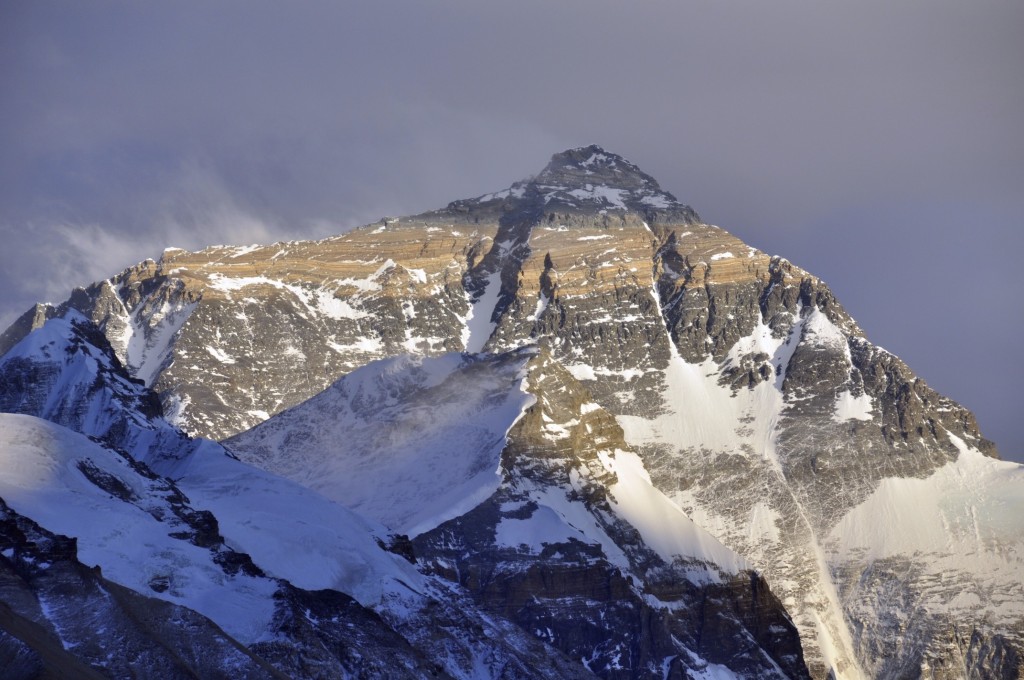
North Face of Everest

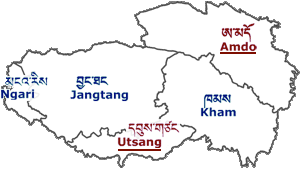
Hi,
I am Australian. Is it possible for me to take the bus from Lijiang or Shangri-La to Lhasa via Routes G214 and G318 or to do the journey by private vehicle?
David.
You will have to take a private tour with tour guide and private vehicle. You can also try to join a group tour. Please write to me in info@thelandofsnows.com